 Central Bank Gold Buying and Gold Repatriation – An infographic hosted at BullionStar.com
Central Bank Gold Buying and Gold Repatriation – An infographic hosted at BullionStar.comWe live in a complex, interactive, and increasingly borderless world in which our lives are impacted more than ever before by events occurring outside the sphere of our personal influence. I wish to establish a forum for the examination of these trends by presenting ideas which are central to the problem, disruptive of conventional thought, or conducive to leisure and conviviality.
Saturday, June 27, 2020
Monday, May 18, 2020
Compact Fusion Power Will Be Here Within 10-15 Years --- So Now Is the Time To Plan for It!
18 May 2020 (continuously updated)
I have now catalogued 34 currently active projects developing prototype fusion power reactors, most of them "compact fusion" designs, and also including several rocket engine designs which are fusion or plasma-based.
To my knowledge, there is no single site where a summary of all of these projects can be obtained, so I am attempting to offer a layperson's overview here. While two pioneering fusion power programs have been closed, including the Russian Kurchatov Institute's superconducting tokamak (as originally proposed and designed by Andrei Sakharov), the first of its kind, there has been an explosion of new projects and new designs, based on increasingly diverse concepts and methodologies.

While most fusion power initiatives are advancing on shoestring budgets, particularly when contrasted to much better funded oil and gas industry projects, which receive hundreds to thousands of times the funding levels allocated to fusion, the field has nonetheless become crowded, diverse and competitive --- and this has occurred despite operating "under the radar," even with political and industry leaders, energy policy analysts, and, most concerningly, green energy advocates (who mostly, it seems, are not paying attention).
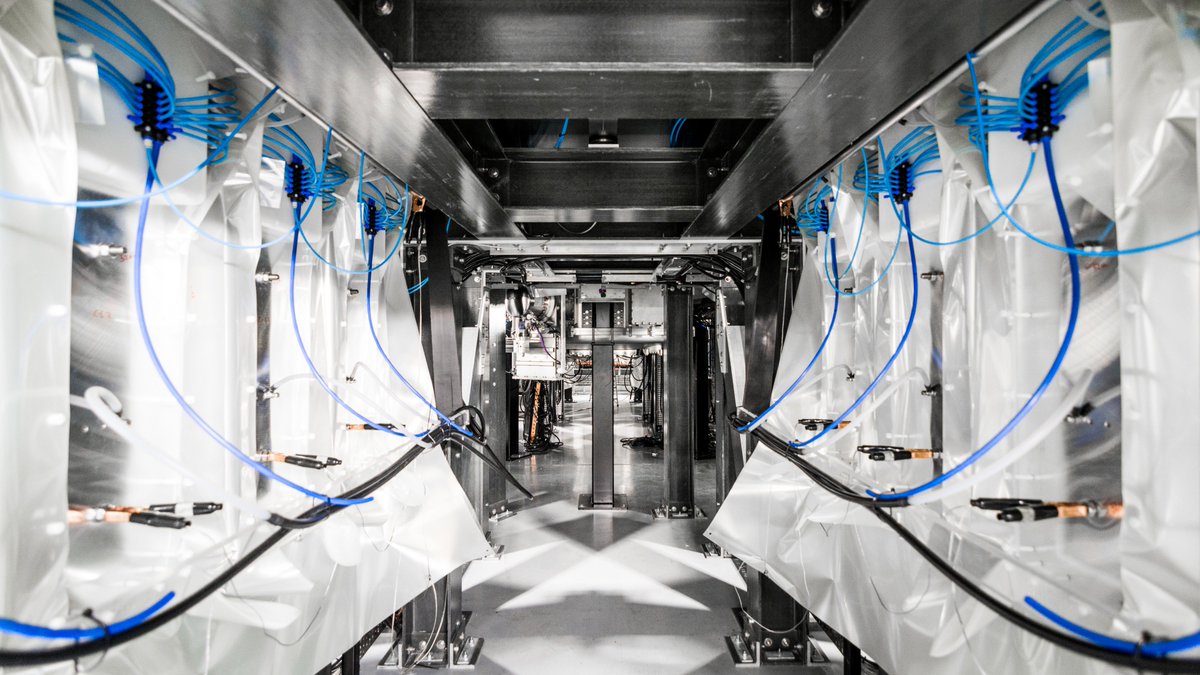
Skepticism about fusion power is rampant, which is perhaps not unusual for an early-stage technology, particularly one as difficult and complex as fusion power, whose parameters are daunting even for physicists employed in the field. Skeptics often comment that fusion power has been in development now for 70 years, with no working reactor yet having been produced. The same skeptics, however, address scant attention to how little funding has been directed to the field over this seven decade span.

If there is a single point about fusion power technologies that is not well understood, it is almost certainly the fact that the rate at which current fusion technologies have been increasing the duration of plasma confinement and power output continues to exceed the rate defined by Moore's law in computer processor design (which accurately predicted the repeated doubling of the number of transistors on a CPU chip every two years). One might think that a similar rate of progress in the fusion energy field would attract wider attention and interest, but, so far, it has not.
I initially chose to lead the present overview with a brief summary of the work of the MIT Plasma Science and Fusion Center, under the direction of Canadian Dennis Whyte. The University's Commonwealth Fusion Systems (CFS) spinoff is one of several better-funded and highly innovative projects in the competition to deliver fusion power quickly, affordably and safely to world markets. It is of note that the CFS project has received its seed money from a "carbon" energy company, as well as from a Silicon Valley consortium and other sources.
The MIT SPARC design is a compact tokamak, now in the planning stages under the auspices of Commonwealth Fusion Systems, is intended to produce net power from a reactor that is only 40 feet in diameter (including its high temperature ReBCO superconducting magnets and energy collection system). MIT has partnered with Eni Energy Corporation of Italy, a visionary oil company leading the way through diversification, to develop its planned net-output reactor.
I have been expecting many more "carbon energy" companies to be joining in with substantive fusion energy investments over the next few years, as fusion power technology will almost certainly dominate the green energy field in areas where energy demand is high to very high (e.g., on power grids everywhere, particularly in urban centres of moderate size or larger, and in situations where local or mobile energy demands may be intense, such as in industrial settings, large oceangoing vessels, remote locations and, potentially, space travel).
Dr Whyte stated, "In the last few years there has been an increasing realization of the dramatic progress of fusion science. There is a lot of hard work ahead of us but the conditions necessary to make fusion power are in hand. We see clear opportunities on both the technical and science side to accelerate fusion’s development. There are also some invigorating changes in the support of fusion in that the private sector is starting to invest. For a long time, this work relied solely on government support.

"We call it ARC, an acronym for Affordable, Robust, and Compact. The basic idea was to ask the question: What would be the minimum-size fusion device that would produce significant amounts of net electrical power? The capacity to make the magnetic field much stronger significantly reduced the size of the device compared to what previous studies had shown. We did the engineering calculations and found a surprising result: a rather compact device can make 250 million watts of net electricity. That’s sufficient to power Cambridge (Massachusetts)! And the fuel is basically free, derived from water. I did the calculation and the yearly cost of fuel per resident of Cambridge is around 20 cents.
"I have no doubt that we can make fusion energy. The harder path in front of us is making it commercially and economically competitive. Fusion is just more complex than other energy sources. There are going to be hits and misses. It seems to me to be a ripe opportunity for a new kind of partnership between the public and private sector to move things forward.... It’s very complex but I think the technology that exists now, while it’s no guarantee of success, will let us accelerate the development cycle so that it’s much faster. I see a pathway that would make fusion energy in under 15 years.
"Fusion is the ultimate choice. The problem is it can’t take forever because, by the numbers that are coming out, we need to start deploying it in the next 20 years. That’s why I really believe it’s worth a crack to see if we can get there in 15. If we create the perfect system 50 or 100 years from now, it could be just too late. That’s the urgency of this!" (July 11, 2016)

The following is my informal list of the 34 fusion power development projects I have identified that are currently underway, also including formally announced future project plans, two discontinued projects (separately from this list of 34 projects), and supplementary information about university plasma physics departments and affiliated plasma physics laboratories, which also conduct basic and applied fusion power research, and also covering emerging collaborations, most notably, the newly-formed Fusion Industry Association. I'm sure there are more projects at various levels out there, though the following are the ones that I have identified through a fairly determined search!
I started at the FusionWiki for my original list, but this page has not been consistently updated, and is far from comprehensive: Alternative fusion devices | FusionWiki. Therefore, my own list (below) is the most up-to-date of any that I am aware of.... I should add that I've been aided by commenters on earlier drafts of this blog post, in particular, Elmar Moelzer and Dr. Matthew J Moynihan. I have also recently communicated with Ariel Cohen, a professional energy analyst and writer, and Senior Fellow at the Atlantic Council (see the October 14, 2019 entry at the end of this post).
I am updating my introduction to point out that HB11 Energy has rapidly jumped to the forefront of the field, breaking out of the "tokamak" mindset that has dominated the majority of fusion reactor development efforts. The HB11 strategy is based on the breakthrough laser technology, chirped pulse amplification, which yields "extreme light." At the focus of an extreme light laser pulse, light intensities on the order of thousands of billions of billions of watts per square centimeter are reached, comparable to what would occur if the entire energy reaching the Earth from the Sun, were concentrated onto a single millimetre-sized spot.
By a nonlinear mechanism, the energy of the laser pulse is converted with high efficiency into directed motion of the electrons and nuclei of the fuel, rather than the random motion associated with heat. In a manner analogous to a beam of particles, but with trillions of times higher density, an inwardly accelerated fuel layer rams into the adjacent fuel, igniting an avalanche of hydrogen-boron reactions, resulting in a high-temperature “burn wave” that propagates down the axis of the cylinder.
Stated simply, we will probably have multiple fusion technologies to choose from. However, all of them are now going to be competing against hydrogen-boron chirped pulse amplification, which has emerged as the technology leader at this time.
I am updating my introduction to point out that HB11 Energy has rapidly jumped to the forefront of the field, breaking out of the "tokamak" mindset that has dominated the majority of fusion reactor development efforts. The HB11 strategy is based on the breakthrough laser technology, chirped pulse amplification, which yields "extreme light." At the focus of an extreme light laser pulse, light intensities on the order of thousands of billions of billions of watts per square centimeter are reached, comparable to what would occur if the entire energy reaching the Earth from the Sun, were concentrated onto a single millimetre-sized spot.
By a nonlinear mechanism, the energy of the laser pulse is converted with high efficiency into directed motion of the electrons and nuclei of the fuel, rather than the random motion associated with heat. In a manner analogous to a beam of particles, but with trillions of times higher density, an inwardly accelerated fuel layer rams into the adjacent fuel, igniting an avalanche of hydrogen-boron reactions, resulting in a high-temperature “burn wave” that propagates down the axis of the cylinder.
Stated simply, we will probably have multiple fusion technologies to choose from. However, all of them are now going to be competing against hydrogen-boron chirped pulse amplification, which has emerged as the technology leader at this time.
34 currently-identified fusion power and plasma physics initiatives:
1. MIT Plasma Science and Fusion Center --- SPARC will utilize a compact classic tokamak design, enabled by high temperature superconductors, and out front in my opinion; aided by recent partnership with Eni Energy of Italy. This will replace the now-decommissioned Alcator C-Mod reactor. The commercial venture will be carried out via a newly incorporated company, Commonwealth Fusion Systems. SPARC is characterized as a "compact, high-field, net fusion energy experiment." SPARC will be the same size as existing mid-sized fusion devices, but with a much stronger magnetic field. Based on established physics, the device is predicted to produce 50-100 MW of fusion power, achieving fusion gain, Q, greater than 3.

Such an experiment would be the first demonstration of net energy gain and would validate the promise of high-field devices built with new superconducting technology. SPARC fits into an overall strategy of speeding up fusion development by using new high-field, high-temperature superconducting (HTS) magnets. SPARC leverages decades of international experience with tokamak physics and is a logical follow-on to the series of high-field fusion experiments built and operated at MIT. The long-term goal is to introduce fusion power into the energy market in time to help combat global warming. An October 2018 update is linked here. For all updates, click here for MIT Plasma Science and Fusion Center News. The 15-year timeline (already started) is illustrated below.
Vinod Khosla, perhaps the best-known of Silicon Valley venture capitalists, has recently partnered with Eni Energy of Italy as an investor in Commonwealth Fusion's SPARC project. Click here for more information.
2. Tokamak Energy (UK) --- A private venture in Oxfordshire, England, developing successive generations of spherical tokamak reactors on a shoestring budget. The company is seeking "a faster way to fusion." The new ST40 reactor, now in development, replaces the proven ST25 reactor. The ST40 is hoped to be the first privately-funded fusion machine to achieve the temperatures required for fusion. In the first stage of ST40 testing in June 2018, the company achieved plasma temperatures of 15 million degrees Celsius (equivalent to the core of the sun). The end 2018 target is dramatically higher, set at 100 million degrees Celsius – the temperature required to force together charged deuterium and tritium particles that naturally repel each other so that they will begin the necessary fusion reaction. The ST40 will aid in investigating a new domain in tokamak operation: the combination of high magnetic field and low aspect ratio (a "squashed" shape). It will be necessary to study the behaviour of the plasma under such conditions. Tokamak Energy hopes to demonstrate that commercially-viable fusion power can be produced in compact spherical tokamaks. The company states, "Our target is to have our compact solution for fusion providing energy into the grid by 2030. To achieve this objective, we are working in stages and ensuring our technology is robust and meets clearly defined targets and criteria. This enables us to develop our tokamaks faster and helps us remain on track to meet our ultimate target." Note that the MAST spherical tokamak is also being developed in Oxfordshire, with public funding.
3. Lockheed Martin --- This company's secretive Skunkworks Lab is reportedly developing a portable, ultra-compact fusion reactor (CFR) design. This is the smallest fusion reactor design ever proposed. However, there has been more talk than action on this project so far, and almost nothing is published, including research findings or results with prototypes. It is intended that the transportable CFR will fit on a flatbed truck, or be capable of powering a large aircraft or sea vessel. On a positive note, Lockheed Martin has just registered a patent for its distinctive design concept. The patent calls for the utilization of a new coil-based magnet technology that produces a much more effective magnetic field for plasma containment, thereby significantly increasing the reactor’s containment capacity (beta limit). The targeted completion date is 2028. Dr. Thomas McGuire, the head of the Skunk Works’ Compact Fusion Project, maintains that the CFR will approach plasma confinement in a radically different way. Instead of constraining the plasma within tubular rings, a series of superconducting coils will generate a new magnetic-field geometry in which the plasma is held within the broader confines of the entire reaction chamber. Superconducting magnets within the coils will generate a magnetic field around the outer border of the chamber. "So for us, instead of a bike tire expanding into air, we have something more like a tube that expands into an ever-stronger wall," McGuire says. The system is therefore regulated by a self-tuning feedback mechanism, whereby the farther out the plasma goes, the stronger the magnetic field pushes back to contain it. The CFR is expected to have a beta limit ratio of one. "We should be able to go to 100% or beyond," McGuire states.
Aviation Week was the first to report updates on the Lockheed Martin Compact Fusion Reactor program, including that the company is in the process of constructing its newest, more capable, experimental reactor, known as the T5, on July 19, 2019. Despite slower than expected progress, the company remains confident the project can produce practical results, which would completely transform how power gets generated for both military and civilian purposes.

The company announced that its legendary California-based Skunk Works advanced projects office is in charge of the effort and had already built four different test reactor designs, as well as a number of subvariants, since the program first became public knowledge in 2014.
"The work we have done today verifies our models and shows that the physics we are talking about – the basis of what we are trying to do – is sound," Jeff Babione, Skunk Works Vice President and General Manager, told Aviation Week. "This year we are constructing another reactor – T5 – which will be a significantly larger and more powerful reactor than our T4."
The T5's main job will be to further test whether Skunk Work's basic reactor design can handle the heat and pressure from the highly energized plasma inside, which is central to how the system works. In a nuclear fusion reaction, a gaseous fuel gets heated up to a point where the pressure is so intense that its very atomic structure gets disrupted and certain particles fuse together into a heavier nucleus. This process also involves the release of a massive amount of energy, which, in principle, could be used to run a traditional thermal power generator.

One of the biggest hurdles for Skunk Works may be ensuring that the design remains truly "compact" by the end of its development. Babione acknowledged that Lockheed Martin still had much work to do in scaling up the capabilities of the reactor design to a practical level, which might also require increasing its physical size.
"How do you scale it up to generate power for a city or an entire town? That’s all ahead of us," he said. "It’s certainly not easy but we think it is in the realm of the possible."
What is clear is that Lockheed Martin is still building new test reactors and clearly remains committed to its compact fusion reactor program, which could fundamentally change the future of portable power generation.
4. TAE Technologies (formerly Tri Alpha Energy) --- Paul Allen of Microsoft was a leading investor, along with New Enterprise Associates (NEA), Venrock, and Wellcome Trust. The company has successfully raised over $500 million and has been in operation for over 20 years. TAE is developing a (challenging) aneutronic design that, if it works, will largely remove neutron radiation and produce an electric current as the direct product of a hydrogen-boron fusion reaction.
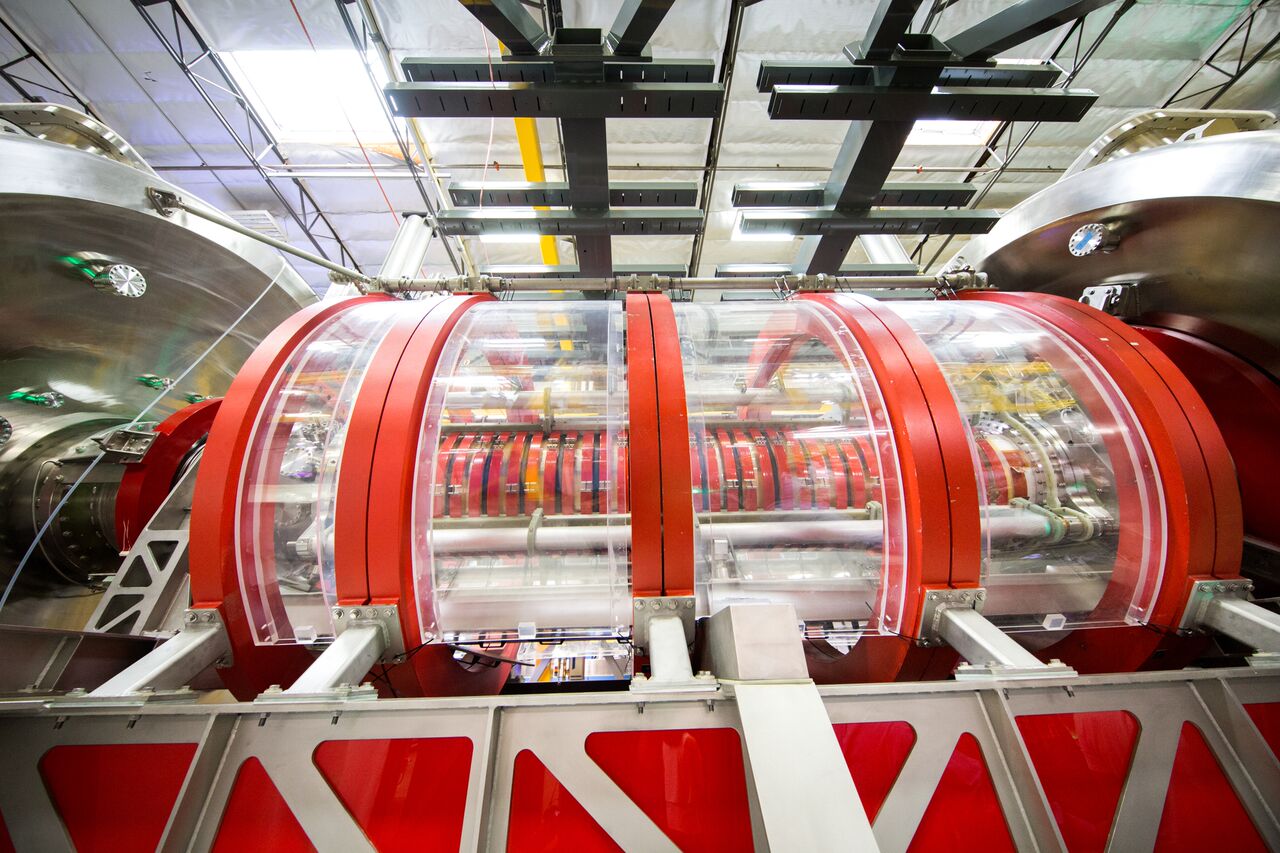
TAE states, "The proprietary beam-driven FRC approach utilizes injection of beams of high-energy hydrogen atoms to develop and sustain a predominantly large orbit particle plasma, making the system more stable, better confined and fusion more achievable. Further, this solution is compact and energy efficient, yielding a practical power plant size of 200-500 megawatts, and it is economically competitive with other power technologies (that provide) continuous baseload power generation. It is a formidable challenge, indeed: Hydrogen-boron fusion requires considerably hotter conditions than other available source elements. However, we remain undaunted because hydrogen-boron is the safest known fuel cycle."
5. Princeton University --- The National Spherical Torus Experiment Upgrade (NSTX-U) is an innovative magnetic fusion device that was constructed by the Princeton Plasma Physics Laboratory (PPPL) in collaboration with the Oak Ridge National Laboratory, Columbia University, and the University of Washington at Seattle. The NSTX-U reactor is also adopting high temperature superconductors and compact design. It produces a plasma that is shaped like a sphere with a hole through its center, different from the "donut" shaped plasmas of conventional tokamaks.
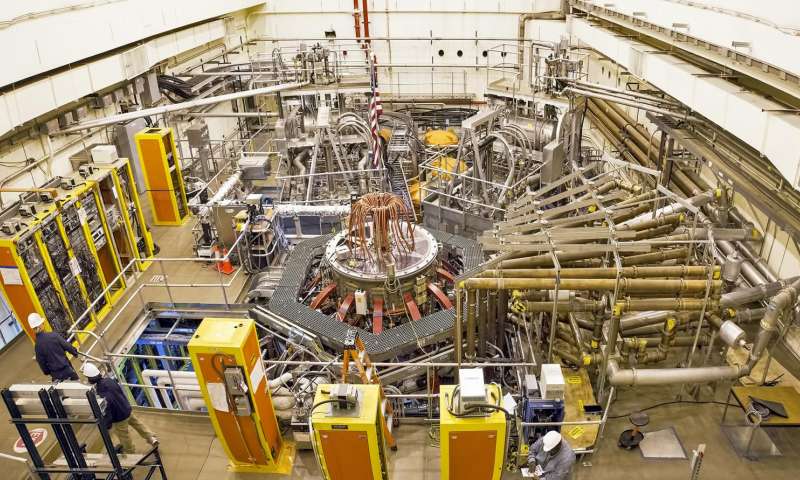
This innovative plasma configuration may have several advantages, a major one being the ability to confine a higher plasma pressure for a given magnetic field strength. Since the amount of fusion power produced is proportional to the square of the plasma pressure, the use of spherically shaped plasmas could allow the development of smaller, more economical fusion reactors.
The Princeton Rotamak is a compacted device that can form and sustain a field-reversed configuration (FRC) which does not have an externally toroidal magnetic field. This is contrasted to the spherical tokamak (ST), which possesses such a field. In the rotamak, the steady toroidal plasma current is driven by means of an externally applied rotating magnetic field (RMF). Sufficiently large plasma current can be generated to reverse the external equilibrium magnetic field on the symmetry axis, so that a field reversed configuration (FRC) is formed. Such configuration is considered as a promising alternative for a fusion reactor because of its compact and simple design, with a natural divertor and high plasma beta. Princeton aims to apply this technology to the Direct Fusion Drive concept for spacecraft propulsion (see #22, below).

On January 12, 2019, Dr. Matthew Moynihan wrote: "The Princeton Rotamak, has set a world-record for the longest stable FRC ever created. The project has had an annual budget of only a few hundred thousand dollars, and a small staff for over 10 years. In April 2018, the Chinese energy company ENN took an interest. They have since invested several millions and hired a staff of 15, in an effort to build a reactor in China based on the Princeton machine. The US keeps ignoring innovations like this."
6. Wendelstein 7-X Stellarator (Max Planck Institute, Greifswald, Germany) --- this design has some unique advantages in terms of its twisting toroidal shape being optimized for plasma confinement. Wendelstein 7-X is the world’s largest fusion device of the stellarator type. Its objective is to investigate the suitability of the stellarator configuration for a power plant. It tests an optimized magnetic field for the confinement of plasma, which is produced by a system of 50 non-planar superconducting magnet coils, which are the technical core piece of the device. It is expected that plasma equilibrium and confinement will be of a quality comparable to that of a tokamak of the same size, but that the disadvantages of a large current flowing in a tokamak plasma will be avoided. With plasma discharges to last up to 30 minutes, the Wendelstein 7-X is to demonstrate this essential stellarator property (plasma stability) via continuous operation. The main assembly of the Wendelstein 7-X was concluded in 2014, with the first plasma produced on December 10, 2015.
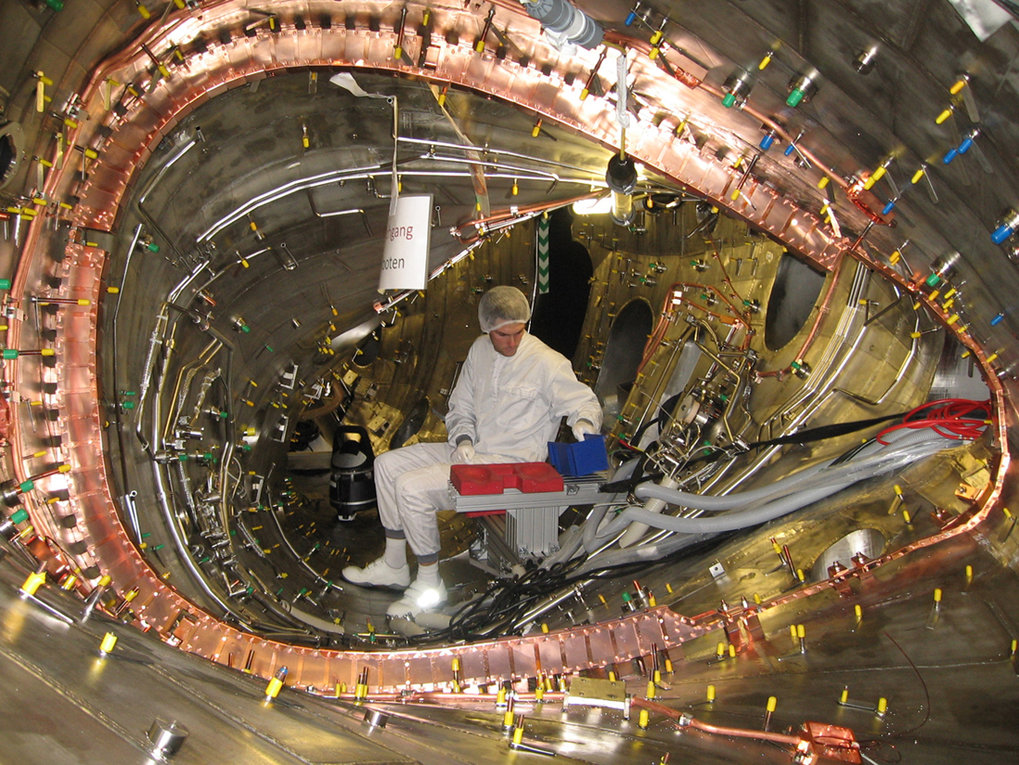
7. University of Washington (UW) Z-Pinch Spheromak --- The Sheared Flow Stabilized Z-Pinch, has been developed by a team from the University of Washington surrounding Uri Shumlak. This group's funding is through ARPA-E Alpha Program. Due to reaching all milestones under this program, they received another, larger round of funding from ARPA-E ($6.8 million), enabling them to spin off a private company called Zap Energy, Inc.
It is now intended that Zap Energy will advance the fusion performance of the sheared-flow stabilized (SFS) Z-pinch fusion concept. SFS Z-pinch drives electrical current through a plasma to create magnetic fields that compress and heat the plasma toward fusion conditions. Through this project, the team will raise the electrical current, reduce physics risks relating to plasma instability and confinement limitations, and develop the electrode technology and plasma-initiation techniques necessary to enable the next steps toward a functional SFS Z-pinch fusion power plant. It is hoped that this approach could provide nearly limitless, on-demand, emission-free energy with negligible fuel costs.

Zap Energy reports that its design is "the most compact solution to Fusion Energy and does not use complex and costly magnetic coils, and that their reactor is consistently producing neutrons.

The sheared-flow stabilized (SFS) Z-pinch has demonstrated long-lived plasmas with fusion-relevant parameters. This Letter presents the first experimental results demonstrating sustained, quasi-steady-state neutron production from the Fusion Z-pinch Experiment (FuZE), operated with a mixture of 20% deuterium/80% hydrogen by volume.

8. CTFusion. Separately from Zap Energy, the University of Washington in Seattle has also spun out the company CTFusion as an early commercial venture, and has maintained a longstanding collaboration with the Princeton Plasma Physics Laboratory. The reactor concept, classed as a dynomak type of design, is of the spheromak subtype, and began as a class project initiated by Dr. Thomas Jarboe in 2012. Dr. Jarboe and (then) doctoral student Derek Sutherland – who previously worked in reactor design at the Massachusetts Institute of Technology – continued to develop and refine the concept. The Z-pinch design builds on existing technology by creating a magnetic field within a closed space which contains the plasma for a sufficient period of time for a fusion reaction to occur. The Sheared Flow Stabilized Z-Pinch has a simple, linear configuration and uses sheared axial flows to prevent plasma instabilities from growing.
The concept is "similar to cars in the centre lane of the highway being prevented from changing lanes by faster moving traffic on either side." The unique aspect of the Z-pinch design is that it allows the superheated plasma to react and continue burning. Uniquely, the reaction would be largely self-sustaining, by continuously heating the plasma to maintain thermonuclear conditions. The reactor then generates the majority of its own magnetic fields by driving electrical currents into the plasma itself. This reduces the amount of required materials and allows researchers to shrink the overall size of the reactor dramatically. Energy generated by the reactor would transfer heat to a coolant that will spin a turbine and generate electricity, similarly to typical power reactors. This is seen as a "much more elegant solution" because the medium in which fusion is generated is also the medium in which the current required to confine it magnetically is driven.

When compared with the conventional ITER design in France, the University of Washington's Z-Pinch Spheromak is projected to be much less expensive – roughly one-tenth the cost – while producing five times the amount of energy (that is, it is proposed to be 50 times more efficient than ITER). The UW researchers factored the cost of building a fusion reactor power plant using their design and compared that with building a coal power plant. They employed a metric called “overnight capital costs,” which includes all expenses, particularly startup infrastructure fees. A fusion power plant producing 1 gigawatt (1 billion watts) of power would cost $2.7 billion, while a coal plant of the same output would cost $2.8 billion, according to their analysis. While coal is an inexpensive carbon fuel, the fuel costs for fusion reactors are vanishingly small, far less than that of any carbon energy source.
9. General Fusion --- General Fusion hopes to achieve nuclear fusion by mechanical (acoustic) compression (inertial confinement), which is way out there as an idea. The commercial-scale facility has been in development since 2002, with Jeff Bezos as a high-profile investor. It is based in Burnaby, British Columbia (Canada) and has an office in Washington, DC. General Fusion’s Magnetized Target Fusion system employs a sphere filled with molten lead-lithium that is pumped to form a vortex. A pulse of magnetically-confined plasma fuel is then injected into the vortex. Around the sphere, an array of pistons drive a pressure wave into the centre of the sphere, compressing the plasma to fusion conditions. This process is then repeated, while the heat from the reaction is captured in the liquid metal and used to generate electricity via a steam turbine.

A major practical advantage is that the liquid metal wall absorbs energy from the fusion reaction which can then be pumped to heat exchangers. The liquid metal also protects the solid outer wall from damage, and can be combined with liquid lithium to breed tritium within the power plant. The company argues that using practical, existing technology (steam powered pistons are used to compress the plasma to fusion conditions), rather than the complex lasers or giant magnets found in other fusion approaches, steam pistons can be practically implemented in a commercial power plant. The compression target is comprised only of magnetized plasma (fusion fuel), which does not need to be manufactured and is effectively cost free.
The company has recently developed a plasma injector ten times more powerful than its predecessor (now the world's most powerful), which has begun operation at General Fusion’s facilities in Burnaby. This new PI3 injector is expected to contribute significantly to the commercialization of the company’s technology. General Fusion’s commercialization program has moved forward rapidly, building on plasma performance milestones achieved in its smaller plasma injectors. The company has developed and tested 18 increasingly sophisticated plasma injectors over the past decade, culminating in the PI3.
The company has recently developed a plasma injector ten times more powerful than its predecessor (now the world's most powerful), which has begun operation at General Fusion’s facilities in Burnaby. This new PI3 injector is expected to contribute significantly to the commercialization of the company’s technology. General Fusion’s commercialization program has moved forward rapidly, building on plasma performance milestones achieved in its smaller plasma injectors. The company has developed and tested 18 increasingly sophisticated plasma injectors over the past decade, culminating in the PI3.

The Canadian government announced October 26, 2018 that it is investing $49.3 million in General Fusion. These new dollars from the Canadian Strategic Innovation Fund will create 400 new jobs, according to Ottawa. The funds will enable General Fusion to build a 70% scale prototype reactor for further research and development purposes.
General Fusion CEO Christofer Mowry told Business in Vancouver details from the Strategic Innovation Fund are confidential. “However, in general this is not a grant,” he said in an email.
The next generation prototype reactor is illustrated below.

Mr. Mowry concluded: “This investment by Canada in General Fusion’s transformative clean energy technology is evidence of its commitment to meeting the country’s climate change goals while fostering truly sustainable growth—sustainable growth that will be powered by the disruptively competitive economics and environmentally responsible benefits of fusion energy. This Strategic Innovation Fund investment and Canada’s expectation for a financial return on this investment are a vote of confidence in General Fusion’s ability to successfully commercialize its technology and in our ability to deliver new jobs and new opportunities throughout British Columbia and across Canada. We are grateful to Canada for its long-standing support of the company, support that has helped General Fusion become the world’s most advanced private fusion technology venture.”


Brian Wang, of Nextbigfuture, interviewed Mr. Mowry (the CEO of General Fusion) in October 2018. Mr. Wang summarized the highlights of the discussion as follows:
General Fusion is rapidly pushing ahead to achieve commercialization and the next step is to make a 70% scale pilot plant that will prove out the viability of generating electricity from General Fusion’s magnetized target nuclear fusion.
General Fusion does not need to demonstrate fusion containment because they are pulsed power systems like a diesel engine or steampunk fusion.
The pilot system will prove three things:
1. Fusion conditions will be repeatably produced.
2. There will be a kill chain from neutrons to electrons (that is, problematic external neutron radiation will be minimal).
3. The economics will be validated.


Simulations will then be used to validate the economics and design specifics to move to a 100% system, which will be a full commercial system.
The Demo system will cost several hundred million dollars. General fusion is fundraising now. Several existing funders (notably, Jeff Bezos and the Canadian and Malaysian governments) are likely participants in the next round. However, the fundraising cannot have actual disclosure until it is completed. As of late 2016, General Fusion had received over $100 million in funding from a global syndicate of investors and the Canadian Government’s Sustainable Development Technology Canada (SDTC) fund. They now have another C$49 million from the Government of Canada.
All of the individual components have been matured enough through years of research to enable integration into a prototype pilot plant.
Over the five years of the demo plant, there will be design, construction and a nominal 18 months of testing.
The plasma injector component built so far is a 2-meter plasma injector. There will be a 3-meter injector for the pilot plant.


Titanium fabrication is with GE Additive as a partner.
The current prototype reactor (which can be seen when it was used as a set in the Canadian Science Fiction series Continuum) has 14 pistons and was not to achieve plasma compression but to work out other engineering issues.
The demo system will have several hundred pistons. Perhaps around 500.
The next system could have more or fewer pistons depending upon how experiments inform the design and how smoothly the plasma will need to be compressed.

The 70% prototype will utilize deuterium fusion and will not add tritium, because "addition of tritium is a well-understood process and would have a predictable impact." Tritium will be added in the follow-up commercial system.
________
While tritium is a hazardous radioactive material, the ultimate General Fusion design is intended to use tritium in an extremely safe manner, due to the incorporation of the molten lead absorption jacket. The use of lithium as an additive to the molten metal in the containment jacket will have the advantage of breeding additional tritium. Thus, the molten metal will be radioactive (the tritium will be extracted for re-use), but will also contain most of the neutron radiation produced by plasma compression.
10. Helion Energy is an American company based in Redmond, Washington developing a magneto-inertial fusion power technology called The Fusion Engine. Helion Energy is a spin-off of Redmond company MSNW LLC that now develops space propulsion related technologies. I consider Helion's rapidly advancing and relatively low-cost program to be one of the most interesting fusion projects currently in development.
Helion's approach combines the stability of magnetic containment and once-per-second heating pulsed inertial fusion. They are developing a 50 MW scale system that is "truck-sized." Helion Energy was founded in 2013 by Dr. David Kirtley, Dr. John Slough, Chris Pihl, and Dr. George Votroubek. Investors in Helion include YCombinator, Mithril Capital Management and Capricorn Investment Group.

The management team won the 2013 National Cleantech Open Energy Generation competition and awards at the 2014 ARPA-E Future Energy Startup competition and were members of the 2014 YCombinator program. The company's Fusion Engine technology is based on the Inductive Plasmoid Accelerator (IPA) experiments performed at MSNW LLC from 2005 through 2012.
This system theoretically operates at 1 Hz, injecting plasma, compressing it to fusion conditions, expanding it and directly recovering the energy to provide electricity. The IPA experiments claimed 300 km/s velocities, deuterium neutron production, and 2 keV deuterium ion temperatures. Uniquely, Helion intends to use combined helium-3/deuterium fuel. This fuel allows essentially aneutronic fusion (releasing only 5% of its energy in the form of neutrons). The helium is captured and reused, eliminating supply concerns. The IPA experiments utilized deuterium-deuterium fusion, which produces a 2.4 MeV neutron per reaction.

Helion and MSNW published articles describing a deuterium-tritium implementation which is the easiest to achieve but generate 14 MeV neutrons.
Benefits of this very different technology will include: (1) By combining the stability of steady magnetic fusion and the heating of pulsed inertial fusion, a commercially practical system has been realized that is smaller and lower cost than existing programs. (2) Modular, Distributed Power: A "container sized," 50 MW module for base load power generation. (3) Self-Supplied Helium 3 Fusion: Pulsed, D-He3 fusion simplifies the engineering of a fusion power plant, lowers costs, and is even cleaner than traditional fusion. (4) Magnetic Compression --- Fuel is compressed and heated purely by magnetic fields operated with modern solid state electronics. This eliminates inefficient, expensive laser, piston, or beam techniques used by other fusion approaches. (5) Direct Energy Conversion: Enabled by pulsed operation, efficient direct conversion decreases plant costs and fusion’s engineering challenges. (6) Safety: With no possibility of melt-down, or hazardous nuclear waste, fusion does not suffer the drawbacks that make fission an unattractive alternative.
According to Elmar Moelzer (personal communication), Dr. Kirtley mentioned in the spring of 2018 that Helion Energy are now constructing a full-scale (or near full-scale) prototype that will have the potential for net energy output. As the Helion design is relatively compact, the company hopes to initiate experiments with the new design in 2019.

Helion Energy's goal is to construct a pulsed commercial nuclear fusion generator 1,000 times smaller, over 500 times cheaper, and realizable 10 times faster than other approaches. Helion Energy's work is based on a modest $10.6 million grant, received in 2015.

Helion is creating technology it calls “The Fusion Engine,” which will use helium from engine exhaust, according to the company’s website. The helium, along with deuterium fuel from seawater, would be heated to become plasma and then compressed with magnetic fields to reach fusion temperature, which is more than 100 million degrees.
Helion Energy has become quite active on Twitter announcing new devices and advances. Click here for more information on their recent reported advancements, which appear truly interesting.

For example, Helion Energy’s research team has discovered that under high voltage (10 kV+), 3-D printed polymers act like very high voltage Zener diodes. Unexpectedly, the printed plastic structure conducts electricity at high voltages, but only in one direction!

This group seem to be doing very interesting work on a quite modest budget, and based around a unique fusion concept.
11. South Korea --- Has a national fusion power development policy. The Korean Superconducting Tokamak Advanced Research (KSTAR) tokamak-type nuclear fusion reactor achieved a world record of 70 seconds in high-performance plasma operation in 2016.
12. China --- is conducting extensive research, and reports a good record for maintaining high temperature plasmas (plasma duration). The Experimental Advanced Superconducting Tokamak (EAST Reactor) is its primary research and development site, located within the Dongpu Science Island, a large research campus that is situated on Lakeshore Peninsula in China’s Anhui Province. The Hefei Institutes of Physical Science is directly responsible for the project, working under the direction of the government-run Chinese Academy of Sciences.
China currently plans two further generations of reactors after EAST (see below).

As time has passed, even since the first draft of this post, China has taken increasing steps to move, possibly permanently, into the lead internationally, as commitment to fusion power research and development has been weaker than one might expect for such a critical technology at the national level almost everywhere. The Chinese appear confident to move forward in areas where others are hesitant or conservative, though critics point out that they offer (and publish) few details of their work.
In March 2019, Chinese researchers predicted that the nation’s next generation HL-2M tokamak would be built before the end of 2019. In November 2019, Duan Xuru, one of the scientists working on the project, provided an update, saying that construction was going smoothly and that the device should be operational in 2020.
Fusion physicist James Harrison, who isn’t involved with the project, stated the following to Newsweek: “HL-2M will provide researchers with valuable data on the compatibility of high-performance fusion plasmas with approaches to more effectively handle the heat and particles exhausted from the core of the device. This is one of the biggest issues facing the development of a commercial fusion reactor, and the results from HL-2M, as part of the international fusion research community, will influence the design of these reactors.”
Nuclear Engineering International reported the following on November 29, 2019:
China has completed the construction of the HL-2M tokamak fusion reactor at a research centre in Chengdu, the capital city of southwest China’s Sichuan province.
The tokamak will become operational in 2020, Xinhua reported on 27 November 2019, noting that installation work has gone smoothly since the delivery of the coil system in June. The new apparatus, with a more advanced structure and control mode, is expected to generate plasmas hotter than 200 million degrees Celsius, said Duan Xuru, head of the Southwestern Institute of Physics (SWIP) under the China National Nuclear Corporation (CNNC). China has already spent close to a billion dollars on the project. The facility will provide key technical support for China's participation in the International Thermonuclear Experimental Reactor (Iter) project, as well as the self-designing and building of fusion reactors, he noted. China is a member of ITER, under construction in France, along with the European Union, the US, India, Japan, South Korea and Russia.
HL-2M, built by the Southwestern Institute of Physics, is an upgrade to China’s previous model, the HL-2A – one of three major domestic tokamaks now in operation in China. The other two are the EAST machine at the Institutes of Physical Science, Chinese Academy of Sciences (ASIPP) in Hefei and J-TEXT at the Huazhong University of Science and Technology (HUST).

China started nuclear fusion research in the 1960s and included construction of the HL-1 (upgrade HL-1M) in SWIP and other small tokamaks such as the KT-5 in the University of Sciences and Technology of China (USTC) and the upgraded CT-6B at the Institute of Physics of the Chinese Academy of Sciences (IP CAS) in Beijing as well as the first domestic superconducting tokamak, the medium sized tokamak HT-7 at ASIPP.
These are all intended to pave the way for the China Fusion Engineering Test Reactor (CFETR), the preliminary conceptual design of which was finished in 2015, with the engineering design started in 2017. CFETR is intended for steady-state operation, as well as tritium self-sustainment. In phase one it should have 200MW fusion power and in phase two it should have power of 1GW. It aims to bridge the fusion experiments between ITER and DEMO --- the proposed nuclear fusion power station expected to build upon Iter. DEMO is seen as the next step towards a "first of a kind" commercial station. CFETR aims to provide DEMO validation.
ENN Energy announced a collaboration with Princeton University in 2019, with the intention of building two further fusion reactors in China (see entry #33).
In March 2019, Chinese researchers predicted that the nation’s next generation HL-2M tokamak would be built before the end of 2019. In November 2019, Duan Xuru, one of the scientists working on the project, provided an update, saying that construction was going smoothly and that the device should be operational in 2020.
Fusion physicist James Harrison, who isn’t involved with the project, stated the following to Newsweek: “HL-2M will provide researchers with valuable data on the compatibility of high-performance fusion plasmas with approaches to more effectively handle the heat and particles exhausted from the core of the device. This is one of the biggest issues facing the development of a commercial fusion reactor, and the results from HL-2M, as part of the international fusion research community, will influence the design of these reactors.”
Nuclear Engineering International reported the following on November 29, 2019:
China has completed the construction of the HL-2M tokamak fusion reactor at a research centre in Chengdu, the capital city of southwest China’s Sichuan province.
The tokamak will become operational in 2020, Xinhua reported on 27 November 2019, noting that installation work has gone smoothly since the delivery of the coil system in June. The new apparatus, with a more advanced structure and control mode, is expected to generate plasmas hotter than 200 million degrees Celsius, said Duan Xuru, head of the Southwestern Institute of Physics (SWIP) under the China National Nuclear Corporation (CNNC). China has already spent close to a billion dollars on the project. The facility will provide key technical support for China's participation in the International Thermonuclear Experimental Reactor (Iter) project, as well as the self-designing and building of fusion reactors, he noted. China is a member of ITER, under construction in France, along with the European Union, the US, India, Japan, South Korea and Russia.
HL-2M, built by the Southwestern Institute of Physics, is an upgrade to China’s previous model, the HL-2A – one of three major domestic tokamaks now in operation in China. The other two are the EAST machine at the Institutes of Physical Science, Chinese Academy of Sciences (ASIPP) in Hefei and J-TEXT at the Huazhong University of Science and Technology (HUST).

China started nuclear fusion research in the 1960s and included construction of the HL-1 (upgrade HL-1M) in SWIP and other small tokamaks such as the KT-5 in the University of Sciences and Technology of China (USTC) and the upgraded CT-6B at the Institute of Physics of the Chinese Academy of Sciences (IP CAS) in Beijing as well as the first domestic superconducting tokamak, the medium sized tokamak HT-7 at ASIPP.
These are all intended to pave the way for the China Fusion Engineering Test Reactor (CFETR), the preliminary conceptual design of which was finished in 2015, with the engineering design started in 2017. CFETR is intended for steady-state operation, as well as tritium self-sustainment. In phase one it should have 200MW fusion power and in phase two it should have power of 1GW. It aims to bridge the fusion experiments between ITER and DEMO --- the proposed nuclear fusion power station expected to build upon Iter. DEMO is seen as the next step towards a "first of a kind" commercial station. CFETR aims to provide DEMO validation.
ENN Energy announced a collaboration with Princeton University in 2019, with the intention of building two further fusion reactors in China (see entry #33).
__________________________
The Chinese are better known for refining existing designs in all areas of technology, rather than for fundamental innovation in design itself. For example, all of China's fusion energy projects are built around the tokamak concept. Some researchers seek designs other than the tokamak, as they question, fundamentally, whether a tokamak can serve as a practical reactor.
Dr. Thomas McGuire, head of the team working on the Compact Fusion Reactor program for Lockheed Martin’s Skunk Works advanced projects division, had this to say on the matter in an interview with Aviation Week in 2014:
“The problem with tokamaks is that ‘they can only hold so much plasma, and we call that the beta limit,’ McGuire says. Measured as the ratio of plasma pressure to the magnetic pressure, the beta limit of the average tokamak is low, or about ‘5% or so of the confining pressure,’ he says. Comparing the torus to a bicycle tire, McGuire adds, ‘if they put too much in, eventually their confining tire will fail and burst—so to operate safely, they don’t go too close to that.’”
13. LPPFusion --- Lawrenceville Plasma Physics is also developing aneutronic fusion on a "shoestring" budget. LPPFusion’s official mission is "to provide environmentally safe, clean, cheap and unlimited energy for everyone through the development of Focus Fusion technology, based on the Dense Plasma Focus device and hydrogen-boron fuel."

The company's nuclear fusion R&D project was initially funded by NASA’s Jet Propulsion Laboratory and is now backed by over eighty private investors, including the Abell Foundation of Baltimore. The company is currently performing experiments with beryllium electrodes in collaboration with the University of California at San Diego Center for Energy Research, with the intention of achieving nuclear fusion via ion energy. This method (similarly to that of TAE) yields a flowing electric current and is radiation-free.
The company explains (2019):
The dense plasma focus device (DPF), for solid physical reasons, has a fusion output that increases sharply with electrical current—approximately as current to the fifth power. In other words, if current goes up by 2, yield goes up by 25 or 32. This scaling law, which works for smaller DPF devices, has been interrupted for larger ones—they don’t get the yield expected from the scaling law. We believe this problem is due to the larger impurities that powerful DPFs have produced. We anticipate that with low impurities our initial experiments with pure deuterium should get our fusion yield up from about ¼ J — LPP Fusion’s best result with tungsten electrodes — to over 2 Joules, that is, an eightfold improvement.

14. MAST (Mega Ampere Spherical Tokamak) upgraded 2017 – Culham Centre for Fusion Energy, Oxfordshire, England, developed in collaboration with the Princeton Plasma Physics Laboratory. MAST is described as the UK's fusion energy experiment. Along with NSTX-U at Princeton, MAST is one of the world's three leading spherical tokamaks (STs). Experiments on MAST are seen as important because they test ITER physics in new regimes and they help determine the long-term potential of the ST, which may eventually be suitable as the basis for a power station. A design based on MAST may lead to a compact Component Test Facility, which would reduce risk and accelerate the development of commercial fusion power. Many experiments on MAST are carried out as collaborations with UK universities, other Euratom Associations and with non-European fusion laboratories. Several are joint experiments with other tokamaks usually under the auspices of International Tokamak Physics Activities expert groups.
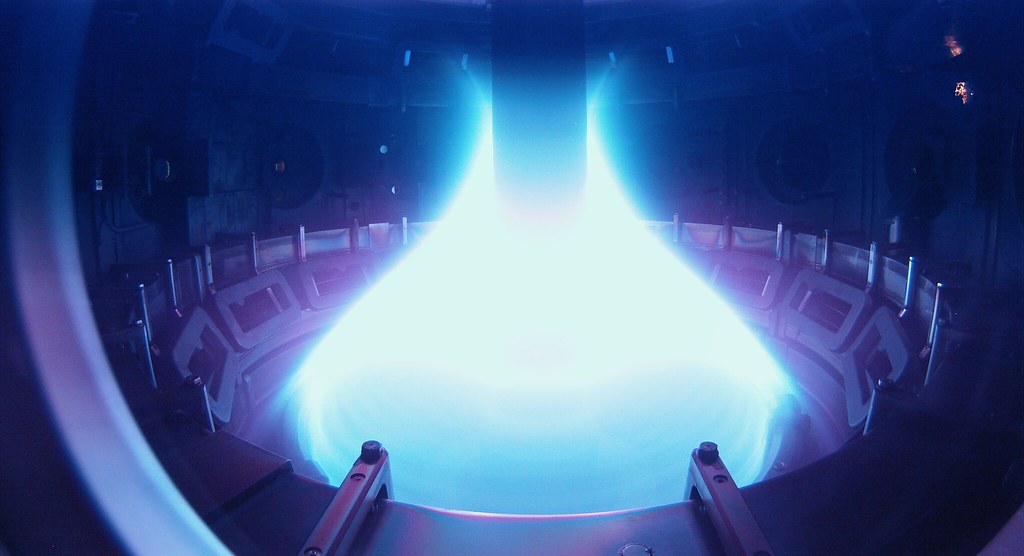
Over 30,000 man-made ‘stars' have now been created by experiments inside MAST. They have provided a wealth of data, enabling many advances in key research areas including plasma instabilities and start-up methods. This is assisted by MAST's suite of diagnostics for analyzing plasmas, which is considered to be "among the best of any tokamak now operating." The Culham Centre for Fusion Energy is implementing a major upgrade that will give MAST expanded and unique capabilities. The features of the upgrade include: (1) An increase in the pulse length by a factor approaching ten; (2) Increased heating power; (3) Better control and pumping necessary to contain the resulting higher temperature, longer-pulse plasmas; and (4) Capability to test advanced 'divertor' solutions to handle high exhaust powers from the plasma. These new capabilities will allow scientists to study plasmas which approach ‘steady-state' conditions – operating regimes that could be used for the design of future fusion machines, which must run for hours or days rather than the seconds of today's devices.
15. The Joint European Torus (JET), first operational in 1983, and also located at the Culham Centre for Fusion Energy in Oxfordshire, remains the world’s largest and most powerful tokamak, and will continue to be the focal point of the European fusion research program until the very large scale ITER reactor is in place. JET is the only device currently operating that can use the deuterium-tritium fuel mix that will be required for commercial fusion power. Since it began operating in 1983, JET has made major advances in the science and engineering of fusion, increasing confidence in the suitability of the tokamak for future power production. Milestones at JET have included the world's first controlled release of deuterium-tritium fusion power (1991) and the world record for fusion power (16 megawatts in 1997). In recent years, JET has carried out work to assist the design and construction of ITER (which is modelled on the JET design). After more than 30 years of successful operation, JET remains closely involved in testing plasma physics, systems and materials for ITER. The JET facilities are collectively used by all European fusion laboratories under the EUROfusion consortium. About 350 scientists from Europe, plus more from around the globe, participate in JET experiments each year, coordinated by a program management unit.

The Culham Centre for Fusion Energy is responsible for the operation of the JET facilities, via a contract between the European Commission and the United Kingdom Atomic Energy Authority. JET is operated under a four-year €283m contract that expires in 2018. About 88% of the running costs of JET are paid for by the EU, which has caused worry about the fate of the lab after Brexit. The UK government has announced that it will continue to fund the JET nuclear-fusion experiment until at least 2020, despite the country’s intention to leave the European Union (EU) in March 2019. JET is operated by the European Consortium for the Development of Fusion Energy, which receives about half of its funding through the EU’s Euratom Horizon 2020 program. In its bid to renew the contract, the UK Department for Business, Energy & Industrial Strategy stated that it will continue to pay its “fair share” of JET running costs until 2020. Industry Secretary Greg Clark commented: “JET is a prized facility at the centre of the UK’s global leadership in nuclear fusion research.”
16. ITER, the International Thermonuclear Experimental Reactor, now being constructed at Cadarache in France, will be a scaled-up version of JET, with linear dimensions twice the size, and ten times the plasma volume. ITER is currently the world's largest and best-funded fusion power development program. It is NOT a compact reactor design (in fact, the ITER project is now coming under criticism as "old tech").
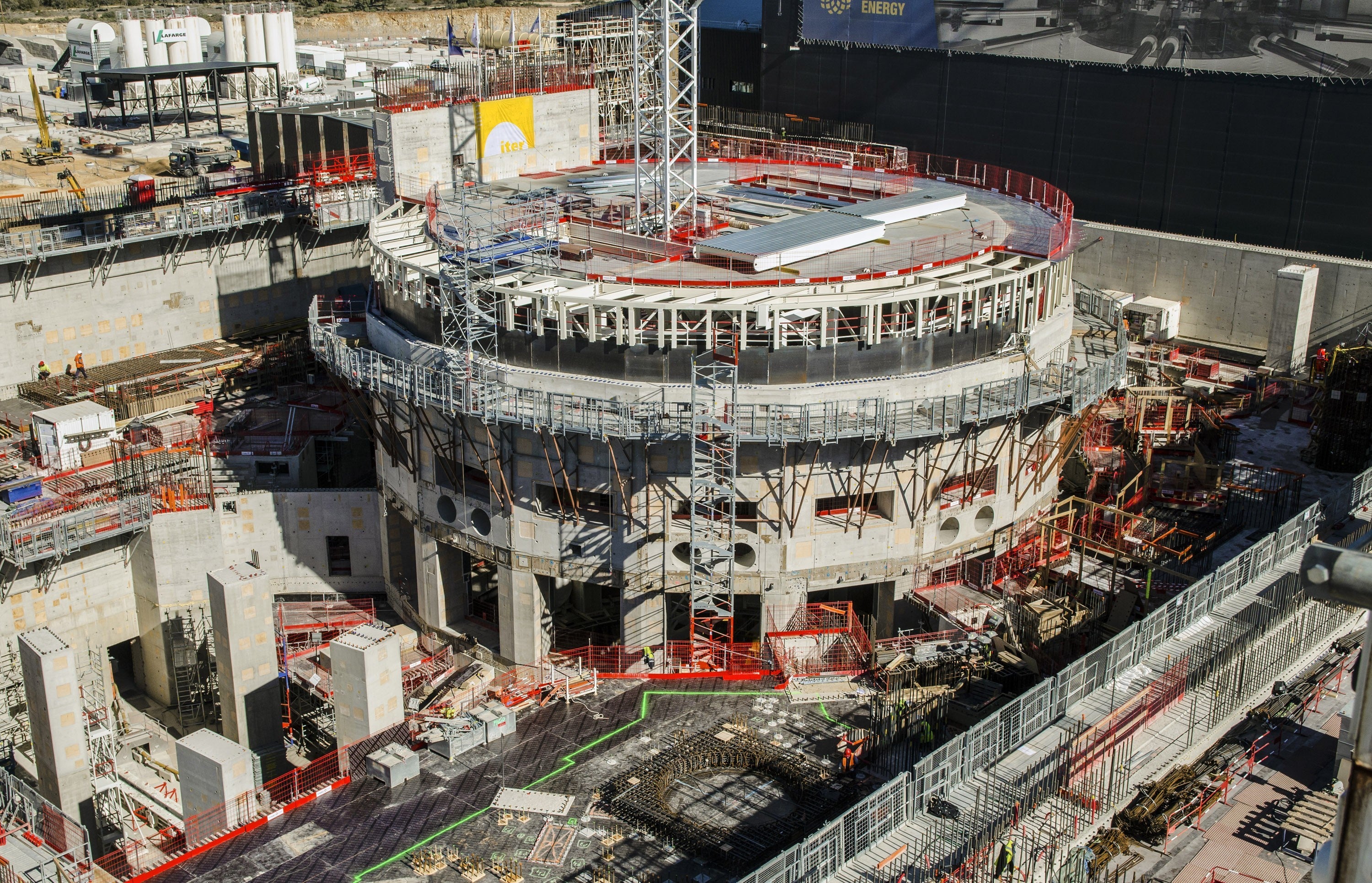
The development of ITER has run years behind schedule, as it is constrained by "plodding and weakly committed" international bureaucracies, consisting of 35 nations, led --- and sometimes unwillingly funded --- by China, the European Union, India, Japan, Korea, Russia and the United States. ITER proposes to develop the first fusion device to produce net energy over sustained time periods, though it is not my personal pick to be the first to achieve this milestone. A goal of first plasma has been set for December 2025, though note that ITER has a lengthy history of setting the goalposts back.

The large scale of the ITER project will very likely have benefits for further scientific work, but no commercial fusion reactor will pursue its now quite outmoded design.
While I am not listing it separately, France has a longstanding Tokamak program that is independent of ITER, though now devoted to component development for the ITER reactor. France operated the Tore Supra reactor from 1988-2010, and in 2013, introduced the upgraded WEST Tokamak (Tungsten --- chemical symbol "W" --- Environment in Steady-state Tokamak). Earlier generation tokamaks had included the Tokamak of Fontenay-aux-Roses and the Petula reactor.
The Tore Supra was for a lengthy period the only tokamak of its size with superconducting toroidal magnets, allowing for the creation of a strong permanent toroidal magnetic field. After a major upgrade to install tungsten walls and a divertor, the tokamak was renamed WEST.

WEST is situated at the nuclear research center of Cadarache, Bouches-du-Rhône in Provence, one of the sites of the Commissariat à l'Énergie Atomique. Tore Supra operated between 1988 and 2010. Its goal was to create long-duration plasmas. The upgrade to WEST took place between 2013 and 2016. WEST has been operational since 2016.
Tore Supra still holds the record of the longest plasma duration time for a tokamak (6 minutes 30 seconds and over 1000 MJ of energy injected and extracted, set in 2003), and it allowed researchers to test critical parts of equipment such as plasma facing wall components and superconducting magnets of the type that will be used in its successor, ITER.
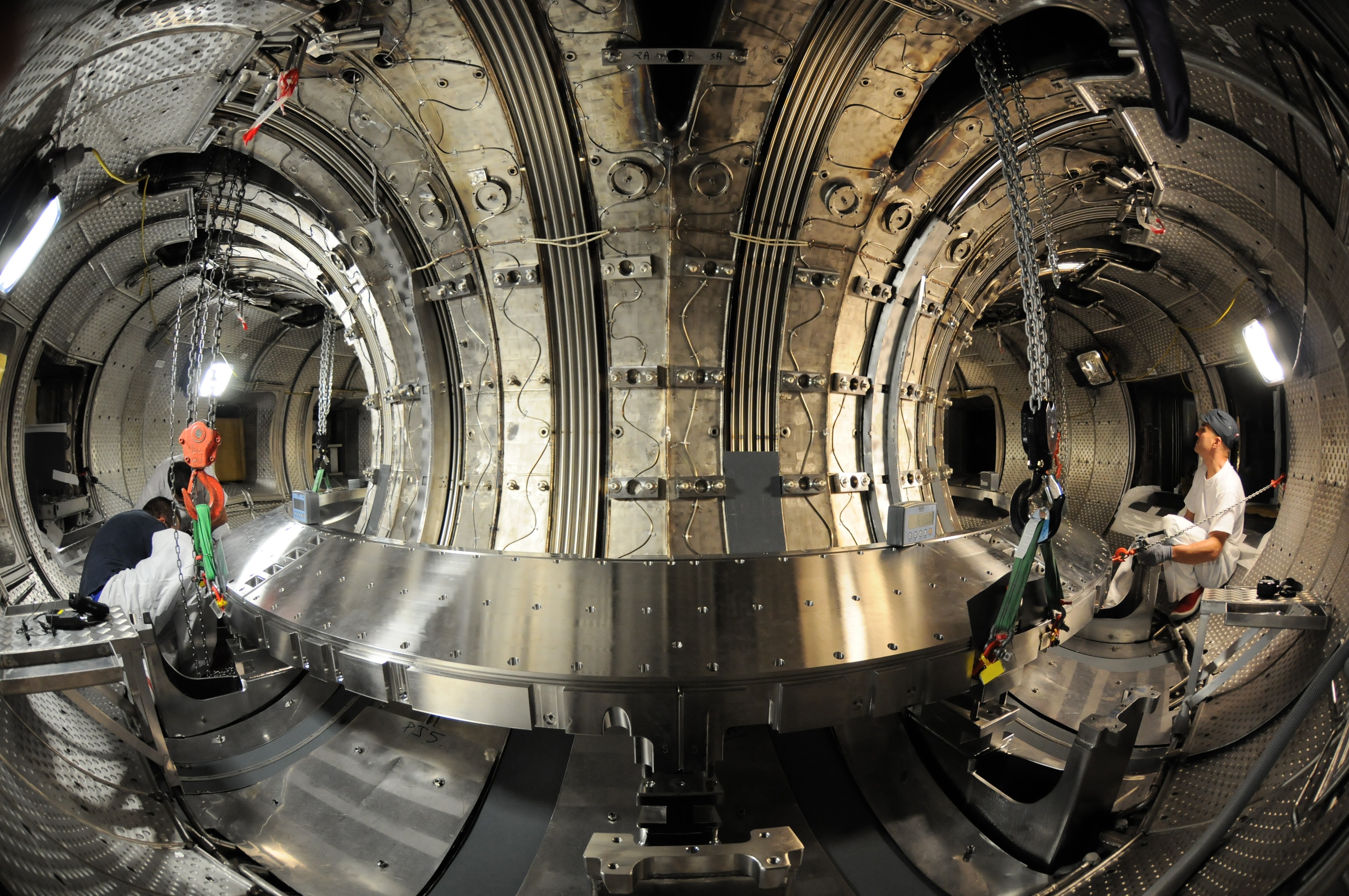
17. Japanese Large Helical Device (LHD). This is the world's second largest stellarator, after the Wendelstein 7-X, and the world's largest helical fusion reactor. The Large Helical Device is located in Toki, Gifu, Japan, belonging to the National Institute for Fusion Science. The LHD employs a heliotron magnetic field originally developed in Japan. Qingping He, of Stanford University, explains that a problem with tokamaks is that, due to the doughnut shape, magnetic fields are denser on the inside of the doughnut than on the outside. This can cause plasma to leak out of confinement, leading to decreased fusion performance or even damaging the reactor (as occurred with India's SST-1 in December 2017). Known solutions prevent the tokamak from operating continuously, as they require a changing field. Therefore, the stellarator twists the doughnut along the inner axis of the doughnut. This means that some parts of the inside of the doughnut are now flipped to the outside (analogously to a Mobius strip), preventing the concentration of magnetic fields along the inside of the device. Since no changes or adjustments to the field are thus necessary, the stellarator can operator continuously.
One form of the stellarator is the heliotron, which twists the confinement regions into a helix. The largest heliotron in the world is the Large Helical Device in Japan. Currently several techniques are employed. The first is neutral beam injection, by which neutral particles are beamed into the confinement chamber, colliding with the plasma. The magnetic fields in the chamber maintain the neutral particles in the plasma, where they transfer their energy to the plasma. These beams can then be injected tangentially to the flow of plasma, which also helps to increase the overall speed of the plasma. Other techniques employed include electron cyclotron resonance heating and ion cyclotron radio frequency acceleration, the latter of which bombards the plasma with radio waves to heat it. There is a plan to increase the density of the plasma by directly injecting frozen hydrogen pellets and researching possible optimizations for their injection. Supercooling of the superconductors used to create the magnetic fields will also be investigated. This strategy will increase the strength of the magnetic fields. It is hoped that the helical design will prove feasible for large scale commercial fusion reactors.
18. Japanese advanced superconducting tokamak JT-60SA. As a project conducted under the Broader Approach Agreement between Europe and Japan, the Satellite Tokamak Programme is upgrading the JT-60U tokamak in Naka, Japan to the advanced superconducting tokamak JT-60SA, re-employing the site buildings, auxiliaries, neutral beams, and some power supplies to support the exploitation of ITER and to promote research and development towards the next-stage device, DEMO (see below).

19. National Ignition Facility | Lawrence Livermore National Laboratory --- In the case of fusion power, “ignition” refers to the moment when the energy from a controlled fusion reaction outstrips the rate at which x-ray radiation losses and electron conduction cool the implosion: as much or more energy “out” than “in.” One of the goals of the NIF is to create a self-sustaining (inertial confinement) nuclear fusion reaction by focusing a 500 trillion watt laser on a 150 mcg deuterium-tritium capsule for 20 billionths of a second.
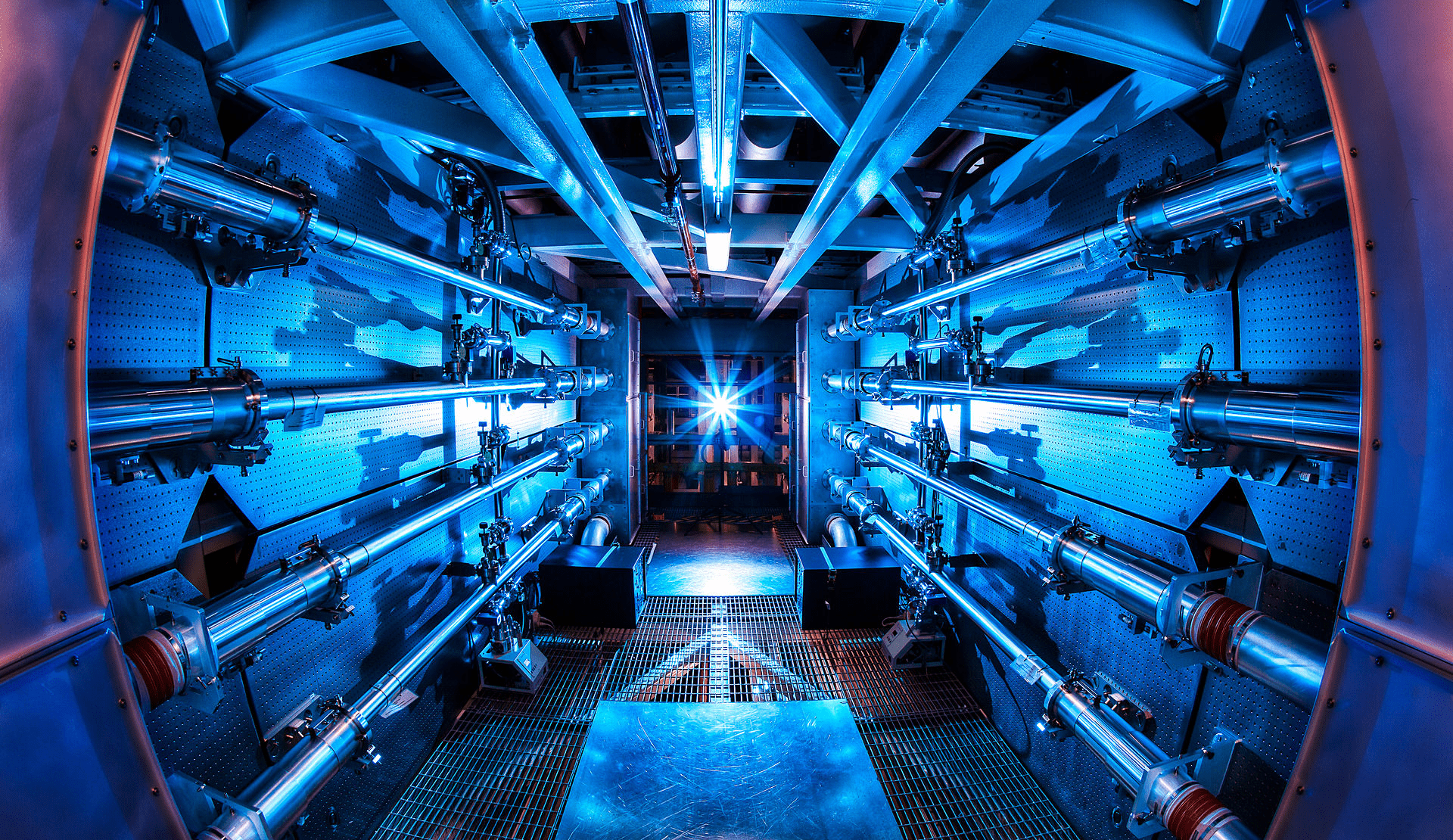
The NIF states: "Achieving ignition would be an unprecedented, game-changing breakthrough for science and could lead to a new source of boundless clean energy for the world. The goal of current NIF experiments is to increase the density of the hot spot by a factor of three at about the same temperature as already achieved. Under those conditions, the fusion reaction rate would be sufficient to generate ignition. Current experiments routinely produce a density sufficient to “stop,” or absorb the energy from alpha particles (nuclei of helium atoms) produced by the fusion reactions in the hot spot. This process, known as alpha heating, further heats the assembled fuel and enhances the energy yield. This is a critical milestone on the road to ignition.
Team member Sebastien Le Pape stated in 2018 that new experiments have created a greater density and pressure within the hotspot and about twice as much heating by alpha particles. Although the latest energy output is less than a thirtieth of that needed for ignition, he points out that self-heating makes the fusion process highly nonlinear. What is crucial, he says, is generating a “burning plasma”, in which alpha particles dump more energy in the hot spot than is lost through radiation and electron conduction. Reaching this point, he estimates, will require a fusion energy of around 150 kJ. “We are much closer to that threshold than we were before,” he explains.
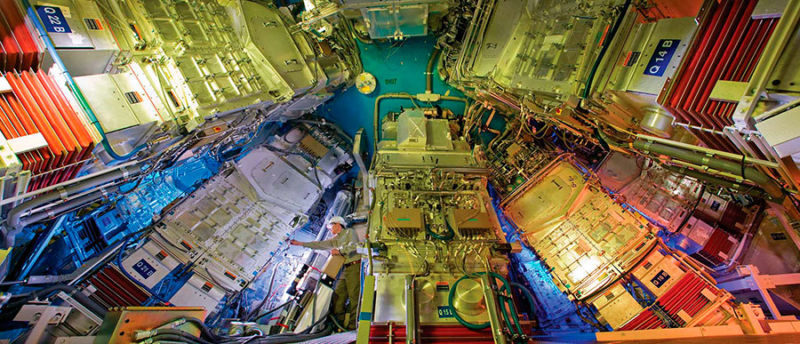
The team is now using capsules and hohlraums (cavities whose walls are in radiative equilibrium with the radiant energy within the cavity) with diameters about 10% larger than before. The larger capsules absorb more energy, which should make them collapse more quickly and generate more fusion reactions. Having carried out eight laser shots since January, he states that the preliminary results look promising. He reiterates, “Nothing is telling us that we can’t make a burning plasma.”
Le Pape believes a burning plasma could be achieved within two years if the group can solve additional engineering problems. As to how much longer it will then take to reach ignition, he refuses to speculate. “It is really hard to answer that question,” he clarifies. “It depends on what challenges we find.”
20. Steady State Tokamak (SST-1). The Institute for Plasma Research (IPR) of India has developed the SST-1 as its national experimental fusion reactor, describing it as having "unique capacities." It is characterized as "one of only a handful of reactors" built with a superconducting magnetic confinement design. The SST-1 was fully commissioned in 2013 after 19 years of development. Within two years, the SST-1 produced repeatable plasma discharges up to ~ 500 ms with plasma currents greater than 75,000 A. In December 2017, the toroidal magnet system became damaged, causing a temporary closure of the facility. By this time, the reactor had conducted about 20 experiments. Repairs are currently under way, with plans to demonstrate the reactor at the 27th International Atomic Energy Agency (IAEA) Fusion Energy Conference in Gandhinagar, Gujarat in October 2018. The SST-1 is the only Tokamak in the world to operate its toroidal magnets in a two-phase flow. This offers diversified results for fusion study. The former Director of the IPR, Prof. Dhiraj Bora, has stated that the SST-1 achievements have set India at par with China and South Korea as one of the eight (leading) participants in the International Thermonuclear Experimental Reactor (ITER). In my view, this description is clearly an exaggeration, but it is nonetheless gratifying that India has also made a commitment to develop fusion power, and the unique design will certainly be of interest for future research.

21. MIFTI (Magneto-Inertial Fusion Technologies, Inc.) was founded in 2008 by scientists from the University of California Irvine. It has a sister company, MIFTEC, under the same management. MIFTI is developing thermonuclear fusion energy to power cities, transportation, space vehicles, military vehicles, and ships from fusion; and MIFTEC is developing a fusion-based generator for the abundant production of low-cost medical isotopes, which are currently in very short supply.

For over 25 years, these scientist have researched and refined a method of controlled thermonuclear fusion, based on Staged Z-Pinch. This concept has predicted a net gain of controlled thermonuclear fusion energy that can possibly solve the world’s energy problems. A by-product of this fusion reaction can also be used to generate radioisotopes that are employed in nuclear medicine procedures worldwide.

MIFTI states that it is the only company in the world that has researched staged Z-pinch technology, utilizing computational modelling, computer simulations, and laboratory experiments, for over the last twenty years. Only recently have MIFTI’s scientists been able to overcome the instability problems of Z-pinch. This problem was solved, because sophisticated software was made available to the MIFTI scientists at the University of California, Irvine by the U.S. Air Force.
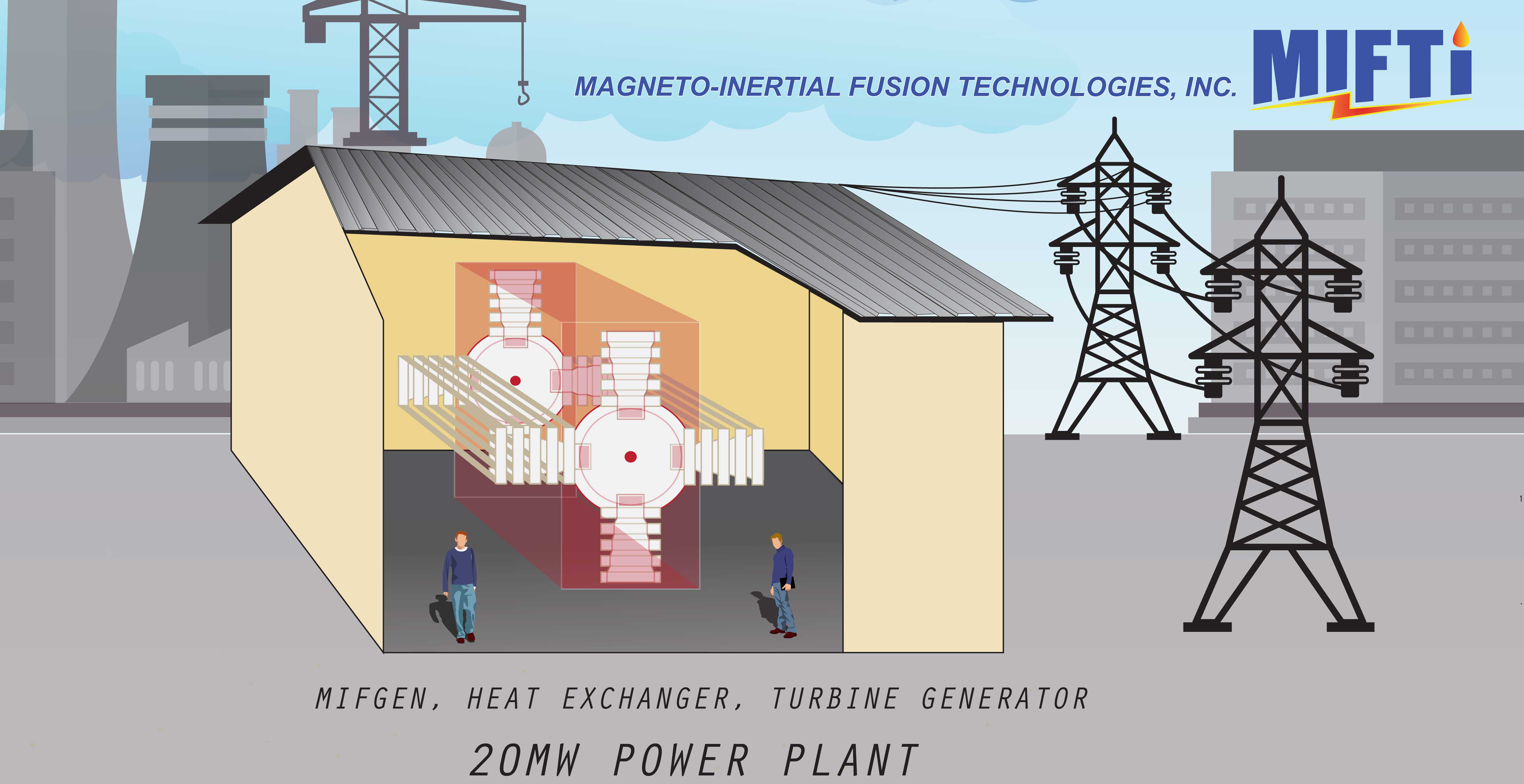
Years of experimentation and understanding the science have led MIFTI’s scientists to conclude that the staged Z-pinch fusion approach will change the landscape of electricity production globally by providing a net energy gain from ten to fifty times the energy used to create the process. MIFTI’s technology will have positive worldwide consequences, not only for energy, but will solve the current crisis of worldwide shortages in nuclear medicine, as staged Z-pinch is very flexible and can be applied to a number of earth’s dilemmas. MIFTI’s research is currently funded through a research grant from the Department of Energy Advanced Research Projects Agency (DOE/ARPA-E) and private investment.
From Next Big Future: MIFTI is a Department of Energy Advanced Research Projects Agency – Energy (DOE/ARPA-E) awardee and benefits from support by the National Nuclear Security Administration (NNSA). MIFTI also holds a fully executed work package agreement with Oak Ridge National Laboratory (ORNL), and is in negotiations for a work package agreement with Savannah River National Laboratory (SRNL). The National Aeronautics and Space Administration (NASA) has shown interest in using MIFTI thermonuclear fusion power devices for use in space craft propulsion systems. The U.S. Navy has also shown an interest in MIFTI’s fusion power device for use in nuclear submarines and aircraft carriers.

The University of Reno Nevada National Terawatt Facility and commercial company, US Nuclear and MIFTEC, were able to generate the most powerful neutron flux from fusion power ever achieved by a private company. They will scale up to a 10 MegaAmp version of their machine. This will have ten times the amperage and should generate 100 times the neutron flux. They expect to generate a neutron flux on the trillion scale, which is clearly greater than the 10 billion required to produce commercial quantities of critical, low-cost radioisotopes that are in short supply.

MIFTEC has contracted with a leading design engineer from a National Lab and has already completed the plans for its first commercial machine called the Staged Z Pinch (SZP) LTD-X (linear transformer driver-X) 10 MegaAmp generator.
22. Somewhat differently than any other project I am aware of, Princeton Satellite Systems (PSS) and the Princeton Plasma Physics Lab (PPPL) are collaborating on a new nuclear fusion technology to power compact spacecraft both within and outside the solar system, with even nearby star missions being seen as feasible. Direct Fusion Drive is a a revolutionary direct-drive, fusion-powered rocket engine. Compact and clean-burning, each 1-10 MW Direct Fusion Drive (DFD) engine can produce both power and thrust with high specific power. Power and propulsion are thus generated from a single engine, which shortens trip times and increases capability for a wide variety of space missions: robotic missions to the outer planets, human missions to the moon or Mars, and missions to near interstellar space.

DFD is based on the Princeton Field-Reversed Configuration reactor (PFRC), or Rotamak, a technology developed by Dr. Sam Cohen of the Princeton Plasma Physics Lab. The reactor employs a unique “odd-parity” RF heating method, producing a steady-state, closed-field configuration with a highly efficient current drive. The PFRC-2 (prototype) experimental machine is currently in operation at PPPL.

23. Applied Fusion Systems (sister company PULSAR Fusion, see below). The UK company Applied Fusion Systems, affiliated with the Culham Science Centre in Oxfordshire, are currently filing a patent for a new nuclear fusion rocket engine, which could employ a compact nuclear fusion reactor as the actual motor of the rocket, a development which the principals believe could pave the way for high speed, interstellar space travel. (Travel between planets within the solar system would be reduced to weeks or months.)
The proposed engine is referred to as an ion thruster, and can work by using a plasma propellant which is accelerated to a high speed by a strong electromagnetic field. Ion thrusters are already deployed to maneuver satellites in space, but these are seen as needing to be adapted by moving away from solid and liquid combustion engines in order to progress with the technology referred to as Nuclear Enhanced Air-breathing Rockets (NEAR).
Significant developments in ion thrusters could potentially pave the way for high speed, interstellar space travel. Richard Dinan, the CEO of Applied Fusion, states, “It’s not a question of [if] you think it’s coming or not. It is coming, for sure. It is humanity’s only shot at interstellar space travel in the near future.”
Mr. Dinan is also CEO of PULSAR Fusion, a London-based company that was founded in 2015. PULSAR Fusion states that it develops and manufactures components for use in Nuclear Fusion reactors and associated applications. The companies focuses include the control of plasma flow and plasma facing materials, specialist robotics, divertors, high temperature superconductors (HTS) & plasma control technologies.
PULSAR Fusion's objective is to grow its existing portfolio of advanced, patent pending components and to acquire additional strategic fusion energy assets., investing in technologies that are believed to offer future growth prospects as the nuclear fusion sector matures.
Additionally, Mr. Dinan is the author of “The Fusion Age: Modern Nuclear Fusion Reactors” and he has raised several million pounds in private investment.
Mr. Dinan states on his Linked-In page that "Nuclear Fusion’s greatest promise lies beyond power stations; AFS is pursuing D-He3 fusion for its off-grid possibilities such as defence, transport and space exploration."
D-He3 fusion is an aneutronic reaction which requires the use of hypothetically achievable higher temperatures and pressures so as to minimize the release of potentially harmful neutron radiation, while directly generating an electrical charge, which can be deployed more directly in a range of applied technologies.
24. HB11 Energy (updated 18 MAY 2020). As we have discussed, most current fusion energy designs are built around deuterium-tritium (DT) fusion, a "first generation" approach that releases high levels of problematic neutron radiation as the bearer of the energy of the reaction. HB11 is focused on a new methodology to develop an aneutronic boronic fusion reactor. The primary obstacle to boronic fusion is that it requires almost ten times the energy that is necessary to produce a deuterium-tritium reaction, but with the HB11 method, the energy is generated by an "avalanche" of "chirped" laser-generated waves, rather than by heat.
A recent in-depth overview was published in The Asia Times on April 19, 2020. Click here for this article.
A University of New South Wales (Australian) spinoff, HB11 Energy makes the following statement: Two recent scientific breakthroughs have opened a new way to fusion reactions, predicted by our founder in the 1960’s. It involves the reaction between hydrogen H and the boron isotope 11 (HB11) as uncompressed solid state fuel within an extremely high trapping magnetic field. Both of these conditions have been demonstrated by experiments and following predictions from computations.
Our intellectual property exploits the combination of these two techniques for generating power. A scientific paper accepted for publication describes the road map that has deemed the approach by one of the founders with his team as a viable method based on the experimentally confirmed reaction gains one billion times higher than classical values, placing it far ahead of any DT fusion approaches.
Other advantages: Unlike Deuterium-Tritium fusion and fission techniques, the HB11 reaction is sufficiently clean with respect to production of any harmful by-products or radiation ("naked helium atoms," stripped of electrons, and thus positively charged, rather than neutrons are released). It thus has the potential to create electricity directly without the need for a heat exchanger and steam turbine to generate electricity as required for coal, fission nuclear power or planned plasma confinement fusion stations. This will allow power stations to be built with a relatively small capital investment and footprint based on presently achieved extreme laser technology.
Further, the company states: We expect to be able to provide energy for about ¼ of the price of coal fired power, without any carbon emissions or radioactive by-products, which will be disruptive to the power industry. With the small size and footprint of a HB11 power station, the addressable market is expected to reach further than the power grid to applications such as ships, submarines, large factories or to remote locations such as isolated towns and mine sites.
Mr. Dinan is also CEO of PULSAR Fusion, a London-based company that was founded in 2015. PULSAR Fusion states that it develops and manufactures components for use in Nuclear Fusion reactors and associated applications. The companies focuses include the control of plasma flow and plasma facing materials, specialist robotics, divertors, high temperature superconductors (HTS) & plasma control technologies.
PULSAR Fusion's objective is to grow its existing portfolio of advanced, patent pending components and to acquire additional strategic fusion energy assets., investing in technologies that are believed to offer future growth prospects as the nuclear fusion sector matures.
Additionally, Mr. Dinan is the author of “The Fusion Age: Modern Nuclear Fusion Reactors” and he has raised several million pounds in private investment.
Mr. Dinan states on his Linked-In page that "Nuclear Fusion’s greatest promise lies beyond power stations; AFS is pursuing D-He3 fusion for its off-grid possibilities such as defence, transport and space exploration."
D-He3 fusion is an aneutronic reaction which requires the use of hypothetically achievable higher temperatures and pressures so as to minimize the release of potentially harmful neutron radiation, while directly generating an electrical charge, which can be deployed more directly in a range of applied technologies.
24. HB11 Energy (updated 18 MAY 2020). As we have discussed, most current fusion energy designs are built around deuterium-tritium (DT) fusion, a "first generation" approach that releases high levels of problematic neutron radiation as the bearer of the energy of the reaction. HB11 is focused on a new methodology to develop an aneutronic boronic fusion reactor. The primary obstacle to boronic fusion is that it requires almost ten times the energy that is necessary to produce a deuterium-tritium reaction, but with the HB11 method, the energy is generated by an "avalanche" of "chirped" laser-generated waves, rather than by heat.
A recent in-depth overview was published in The Asia Times on April 19, 2020. Click here for this article.
A University of New South Wales (Australian) spinoff, HB11 Energy makes the following statement: Two recent scientific breakthroughs have opened a new way to fusion reactions, predicted by our founder in the 1960’s. It involves the reaction between hydrogen H and the boron isotope 11 (HB11) as uncompressed solid state fuel within an extremely high trapping magnetic field. Both of these conditions have been demonstrated by experiments and following predictions from computations.
Our intellectual property exploits the combination of these two techniques for generating power. A scientific paper accepted for publication describes the road map that has deemed the approach by one of the founders with his team as a viable method based on the experimentally confirmed reaction gains one billion times higher than classical values, placing it far ahead of any DT fusion approaches.
Other advantages: Unlike Deuterium-Tritium fusion and fission techniques, the HB11 reaction is sufficiently clean with respect to production of any harmful by-products or radiation ("naked helium atoms," stripped of electrons, and thus positively charged, rather than neutrons are released). It thus has the potential to create electricity directly without the need for a heat exchanger and steam turbine to generate electricity as required for coal, fission nuclear power or planned plasma confinement fusion stations. This will allow power stations to be built with a relatively small capital investment and footprint based on presently achieved extreme laser technology.
Further, the company states: We expect to be able to provide energy for about ¼ of the price of coal fired power, without any carbon emissions or radioactive by-products, which will be disruptive to the power industry. With the small size and footprint of a HB11 power station, the addressable market is expected to reach further than the power grid to applications such as ships, submarines, large factories or to remote locations such as isolated towns and mine sites.
HB11 Laser Boron Fusion Reactors will thus produce electricity at a quarter the price of of existing coal fired power, and
they will be much cheaper to build. Technology already exists to allow the
development of an HB11 Laser Fusion Reactor, and the first prototype HB11 Laser Fusion
Reactor could be built in just 5 to 10 years. Only modest investment is required for
further research to clarify some of the scientific methods and engineering
requirements.
These reactors will not generate any form of nuclear waste nor generate any sort of nuclear by-product that could be misused for unintended purposes.
The actual cost to build these reactors
will be very low, significantly cheaper than existing coal fired power plants. HB11 Fusion Reactors can be built anywhere
and need no water as they produce electricity directly, meaning that there will
not be the need for steam turbines.
These reactors will be able to be built to
scale, meaning that smaller communities can build smaller reactors, larger
reactors can be built for large scale urban and industrial usage. HB11 Fusion Reactors will be able to be
used in a variety of different situations, including ships and submarines,
industry and manufacturing, isolated communities or interconnected to major
power grids.
Laser Boron Fusion Reactors will offer an
inexpensive, clean, long term solution, with no carbon emissions, no
radioactive waste and produce a very small environmental footprint. Laser Boron Fusion offers an ideal,
affordable solution for a global clean energy future and can be one of the
major methods of combating climate change and global warming.
Science Alert published a discussion of the company's plan on December 29, 2017, stating: Their hydrogen-boron reactor works by triggering an "avalanche" fusion reaction from a laser beam packing a quadrillion watts of power in just a trillionth of a second. "The fuels and waste are safe, the reactor won't need a heat exchanger and steam turbine generator, and the lasers we need can be bought off the shelf," says Warren McKenzie, managing director of HB11, which owns the patents to the new technology.
25. Fuse Energy in Montreal does not have a public website, but has established a Facebook page. The company is headed by Max Yaney, who previous founded Titan Aerospace. Fuse intends to "take in ideas and then evaluate them." The company's stated missions are: (1) To bring fusion energy to life and create universal abundance; and (2) To solve our species' energy demands and to provide endless clean energy. A highly credentialed advisory panel has been assembled, including former Google staffers, among others.

To be blunt, Fuse Energy's goals, methods and design are presently quite vague. The company seems to have a "tech startup" feel. Time will tell if something more specific develops.

26. First Light Fusion was started in 2011 as a spin-out from Oxford University in the UK. The company is reported to have raised tens of millions of pounds from Parkwalk Associates. The goal of the company is to re-work "everything about inertial confinement fusion compression." The company are examining compression with a single laser, trying different target designs (encasing fuel in gels, glass, different target shapes and sizes, etc.). Dr. Stephen Chu (a Nobel Prize winner and former US Energy Secretary) sits on the company's science advisory board.

The company states the following:
First Light Fusion Ltd is a lean, focused and agile corporation researching energy generation by inertial confinement fusion. The company was spun out from the University of Oxford in June 2011 and is based near Oxford. First Light continues to work closely with the academic community, both in the UK and internationally. The company is well-funded by both institutional investors and private individuals.
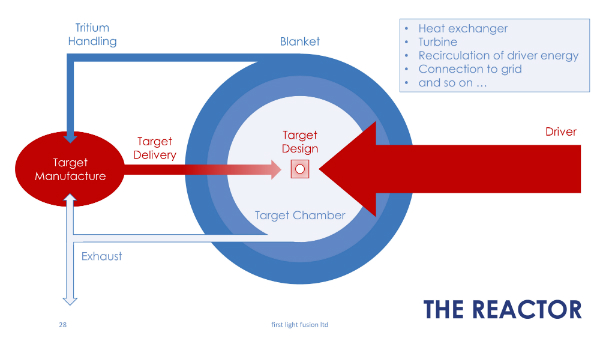
Inertial confinement fusion for energy generation is a well-established research field and is being pursued in many laboratories worldwide, perhaps most notably in the US at the National Ignition Facility.

First Light is exploring a number of alternative research directions that harness the same fundamental physics, with the prime focus being power generation. First Light’s work to date has included theoretical analysis, detailed numerical simulations and experimental validation. This has allowed description of accessible parameters, and has led to a clear vision of the pathway to fusion.
First Light has also considered the costs and engineering practicalities of a reactor implementing its technology and can articulate a number of advantages over other approaches. We are pursuing pulsed power driver technology, which we believe will reduce costs by an order of magnitude.

Additionally, the energy focusing processes being pursued form the foundations of a new technological platform where secondary opportunities exist in a number of alternative applications, for example material processing and chemical manufacture.
An exhaustive project to test the viability of the company's proprietary fusion island concept by the UK Atomic Energy Authority (UKAEA) has recently concluded (2019) that the project is viable – giving First Light Fusion the green light to proceed with real-world tests of its technology.
The company's fusion island sub-system is a unique design aspect, responsible not only for converting the fusion energy into heat but also for managing the fuel supply in a fusion power plant.
It is novel because rather than encouraging a symmetrical implosion – an approach taking with traditional fusion reactor designs that is plagued with inherent instabilities in the reaction process – it harnesses the instabilities of the process to encourage an asymmetrical approach.

The design has the potential to achieve the net power gain because it tackles three of the biggest issues that have plagued fusion reactor design – with the recent UKAEA study verifying that the fusion island successfully tackles these.
(1) The first is neutron damage, where over time radiation from the high-energy streams of neutrons that make up much of fusion energy cause damage to the structure of reactors. Neutron damage can be a problem in fission too, but it is far worse in fusion because the larger amounts of energy generated mean higher neutron energies.
The way the fusion island handles these streams of neutrons means, according to First Light Fusion, that there is less damage to the structure – making the long-term running of the reactor in question more viable.
.jpg?ext=.jpg)
(2) The second is heat flux, the density of energy flowing through the reactor. If there is too much energy concentrated in one place within a reactor for too long, this too can cause severe problems with its operation – something that the fusion island is designed to handle.
(3) The third is tritium production. Tritium is one of the key fuels in most fusion reactor designs, as it is combined with deuterium to increase the rate at which the fusion reaction proceeds. With a half-life of only 12.3 years, tritium is exceptionally rare in nature.
As a result, it can most efficiently be produced in the reactor itself through the exposure of a lithium-based coating on the reactor’s inner walls to neutron radiation. When lithium is exposed to neutron radiation, tritium is a naturally-occurring reaction product.
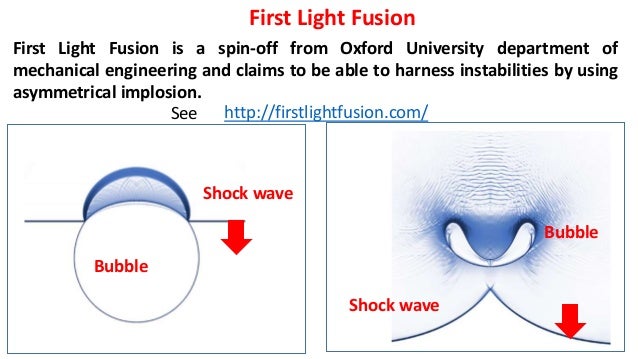
Not only does the fusion island enable this reaction, the UKAEA study also confirming that its design allows the material to be pure lithium – removing the need for a lithium material to be custom-created for the design.
“It is hard to overstate the importance of being able to make the power plant from existing materials, like natural lithium,” explains Nick Hawker, founder and CEO of First Light Fusion. “This has the potential to bring fusion power to market up to a decade sooner.”
27. AGNI Fusion is obviously in the early stages, having grown out of an award-winning science fair project in 2011, which was recognized by President Obama at the time.
![Reactor Overview [1]-01.png](https://images.squarespace-cdn.com/content/v1/58839c83cd0f6828c5b4f4f1/1523929485656-EOAPS4VD5AEXRKZQ5QE9/ke17ZwdGBToddI8pDm48kHrc1MjerlPyvrcskIUfn8l7gQa3H78H3Y0txjaiv_0fDoOvxcdMmMKkDsyUqMSsMWxHk725yiiHCCLfrh8O1z5QHyNOqBUUEtDDsRWrJLTm4LaxnXTLZEIl_I4gL2tysgVY3WZI8G1fr8m3QW-5OeUz2HyGJsYIrucoxYXQ_z6D/Reactor+Overview+%5B1%5D-01.png?format=500w)

The AGNI group are attempting a beam approach to fusion, outlined as follows:
AGNI also intends to market the fusion product of their reactor design, as follows:
The product of deuterium and tritium fusion is helium-4 and a neutron. Helium-4 is a rare resource that does not stick around the Earth once in the atmosphere, and is needed for scientific equipment like MRIs. The neutron is the main carrier of energy, holding 14.1 MeV, that will be used to power a steam turbine, generating electricity.
28. Horne Technologies. Based in Denver, this company's stated goal is to develop the world's first continuous-operation enabled, superconducting, high-beta fusion research device, with a design comparable to the Lockheed Martin approach, but ideally "simpler."
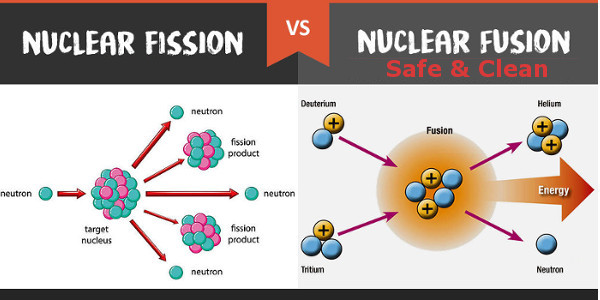
The company states:
Fusion itself is fairly easy, even young people at the high school level have built simple fusion reactors called fusors for science projects. Why then do we not have all our electricity produced from fusion? The problem is optimization. Although fusion is easy, it is not easy to get energy from it. In fact no one has ever come close to break-even, the point at which you produce more energy than you use.
Horne Technologies is here to change that. Our prototype is complete.
Fortunately, and unfortunately, while it has been easy to burn fossil fuels on Earth for energy, this is not feasible in space. Without such an abundant energy source, expanding into the solar system will be very difficult. The space race of the 1960s created many of the technologies we use every day. Using this same methodology offers a great path to fusion.
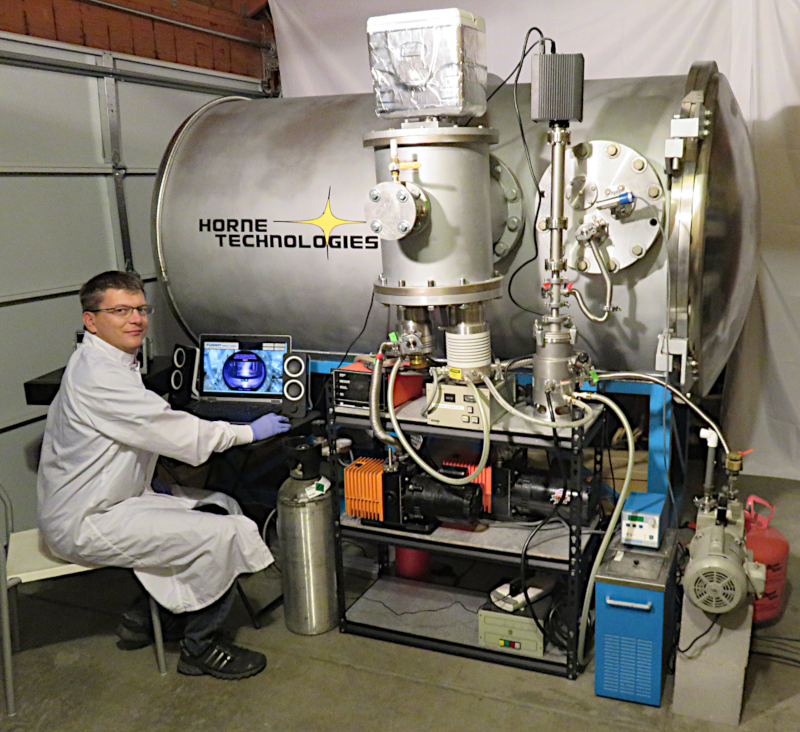
A hybrid approach and technology is being implemented to develop fusion technology for terrestrial and space energy applications. Fusion is the disruptive energy of the future.
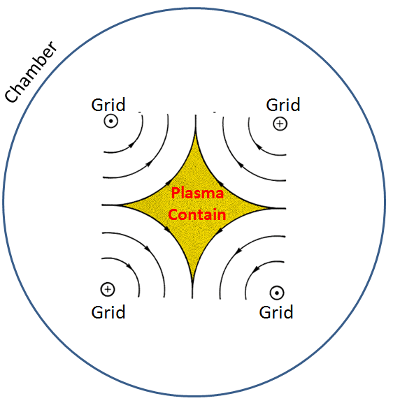
Four core technologies are combined with state of the art high-temperature superconductors to improve the performance of the fusion device:
I) Inertial Electrostatic Heating (IEC)
II) Superconducting, Magnetically-Shielded Grid
III) High-Beta Capable Fusion Core
IV) Ion-ion and ion-neutral thermalization mitigation optimization
For 10 years Horne Technologies has been working on these fusion technologies to create optimized solutions for a viable fusion reactor for use in space and on Earth.
29. US Navy. Popular Mechanics reported on October 10, 2019, that a patent filed by the U.S. Navy last month claims to have developed a compact Nuclear Fusion Reactor. Popular Mechanics notes that nuclear fusion has been touted as the ultimate energy source, generating enormous amounts of power with little to no harmful byproducts. However, no one has yet been able to mass produce or control large quantities of fusion energy, so designs for the reactor seemingly stretch the limits of science.
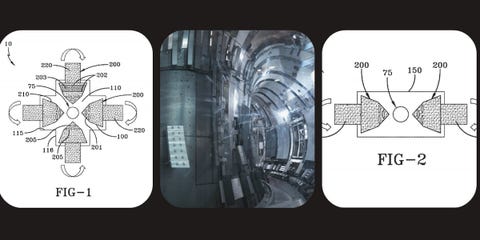
The magazine reports:
The U.S. Navy has filed a patent for a compact fusion reactor, according to exclusive reporting by The War Zone.
The patent for the device was reportedly filed on March 22, 2019, and published late last month. This technology, by all accounts, is "a long shot." But, if successful, it would completely revolutionize how we power our world.
In order to create fusion energy on Earth, scientists and engineers must build instruments that can contain gases that will reach temperatures of hundreds of millions of degrees in order to compel atomic nuclei to collide at high speeds to create a superheated plasma.
One kilogram of fusion fuel produces the same amount of energy as 10 million kilograms of fossil fuels. It’s the perfect energy source; it doesn’t emit greenhouse gases or leave behind harmful byproducts such as nuclear waste—unlike nuclear fission. In fact, its sole byproduct is helium: an inert, extremely useful gas.
Current reactors are approximately the size of a building; a relatively portable compact fusion reactor, one designed to power relatively small vehicles, would be a game-changer. The Chinese government, Lockheed Martin, and several other private companies have made inroads in shrinking the technology, and the Navy is investigating a unique approach. This device, according the The War Zone, could potentially fit on a boat or an aircraft.
The success of the device, developed by researcher Salvatore Cezar Pais of the Aircraft Division of the Naval Air Warfare Center, relies on a dynamic fusor component. According to the patent, Pais’ plasma chamber contains several pairs of dynamic fusors, which rapidly spin and vibrate within the chamber in order to create a “concentrated magnetic energy flux” that can compress the gases.
Coated with an electrical charge, the cone-shaped fusors pump fuel gases such as Deuterium or Deuterium-Xenon into the chamber, which are then subjected to intense heat and pressure to create the nuclei-fusing reaction. In contrast, current technology at reactors around the world use superconductors to create a magnetic field.
The War Zone reports that the device could potentially produce more than a terawatt of energy while only taking in power in the kilowatt to megawatt range.
Dr. Matthew Moynihan is currently conducting a review of the US Navy proposal, aspects of which are unconventional and controversial (personal communication).
30. Convergent Scientific, Inc. (CSI) CSI has developed a variation of the Convergent Ion Focus (CIF) approach to fusion energy generation, which is capable of producing extremely energetic non-neutral plasmas at much lower relative input energy requirements. The design is based on 50 years of research, specifically the Inertial Electrostatic Confinement (IEC) design. The small company has built and tested one prototype, and intends to retrofit coal-fired power plants with convergent ion focus technology.

The principals of the company are:
Robert Clarke Blair
Chief Operating Officer
Clarke has spent 25 years helping companies implement earned value and project management systems, with the last 14 years devoted to implementing Oracle/Primavera products, with emphasis on process improvement and enterprise-wide portfolio/resource management. He provides leadership and training to help organizations make the changes required (especially in human behavior) to implement enterprise-level project management software.
Devlin Baker
Chief Technology Officer
Devlin holds Bachelors of Science degrees in Physics and Mathematics, Western Washington University, 2008, with additional concentrations in Electrical Engineering, Astronomy, and Geology. He has been involved in experimental physics, software development and computer aided design for the last eight years. He has been working with small scale electrostatic (IEC) fusion reactors since fabricating his first prototype in 2001.
Joel Rogers
Chief Technical Advisor
Joel holds a Bachelor of Physics from MIT (1965) and a PhD in Nuclear Physics from UCLA (1969). He was a research scientist at Canada's "TRIUMF" in Vancouver, BC, from 1973 to 2004. He has published over 100 articles in refereed journals such as Physical Review, Nuclear Physics, and Nuclear Instruments and Methods. He is the holder of five U.S. patents, and the author of a currently pending patent, “Modular Apparatus for Confining a Plasma.”
31. HyperV Technologies Corp. is a privately held fusion energy research and development company founded by Dr. F. Douglas Witherspoon in 2004 and located in Chantilly, Virginia, U.S.A. The company combined with HyperJet Fusion Corporation in 2017 (see below), keeping the original address. The company specializes in the development of unique ultra-high performance plasma guns for use in fusion energy, plasma physics research, and industrial applications. The name HyperV comes from the word “HyperVelocity” and references the extremely high velocities achieved by plasma when formed and fired from the company's plasma guns.
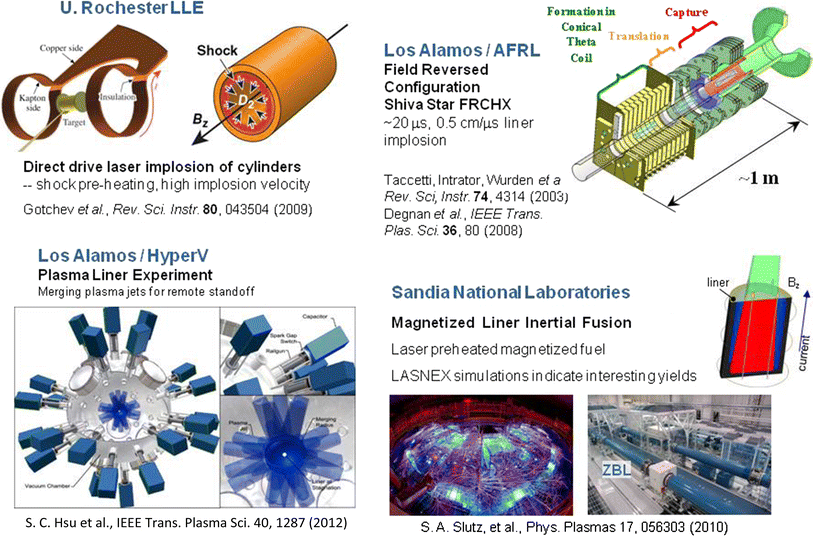
Since its establishment in 2004, HyperV Technologies Corp. has received funding through a series of research grants from the U.S. Department of Energy’s Office of Fusion Energy Sciences (OFES). HyperV was awarded these grants and numerous SBIR’s, following a highly competitive proposal and rigorous scientific peer review process.

In continuing the advancement of its fusion energy research and development effort, HyperV states that it has teamed with the "legendary" Los Alamos National Laboratory (LANL) of New Mexico. This HyperV/LANL partnership is focusing on the design, development and operation of the PLX-α experiment located at LANL in New Mexico and funded by the DOE Advanced Research Projects Agency-Energy.
In addition to its plasma gun development effort, HyperV is developing extremely fast fiber-coupled imaging systems for diagnostics applications in plasma physics, aerospace applications and other industrial processes.

Interestingly, HyperV Technologies has been researching Plasma Jet Magneto-Inertial Fusion (PJMIF), with the intention that its plasma electric thruster technology will be ideal for propelling spacecraft within the solar system. For example, the company's technologies enable the use of solar panels for electric power out to at least the asteroid belt beyond Mars without requiring a "large unwieldy array" of solar panels. For beyond the asteroid belt, in the darker outer solar system, a compact fission reactor capable of providing electrical power for years is identified the most practical energy source.
The company states:
We have identified a unique new approach to using a non-gaseous propellant, which maintains the same high Isp and thrust of argon or xenon gas propellants in our thruster. This new propellant approach provides the E3P thruster technology with the following advantages:
1) The non-gaseous propellant is completely inert and non-toxic, and requires no high-pressure propellant tanks which can explode, or valves which can fail. Given that the propellant is inert and non-toxic, it is an ideal candidate technology for safe use with, and storage aboard, manned platforms and on cubesats.
2) This thruster technology could enable interplanetary missions on cubesat spacecraft as small as 6U (briefcase size spacecraft) and with similarly low cost.
3) It is scalable up to large spacecraft in the kilowatt power range.
4) It can be throttled for fine maneuvering of the spacecraft.
5) Both the thruster technology and propellant are mechanically robust.
6) It has high thrust per unit area, taking up less space on the rear of the spacecraft.

On October 17, 2017, HyperV Technologies announced that it has begun the process of merging with HyperJet Fusion Corporation. Dr. Y. C. Francis Thio was appointed as the President and CEO of HyperJet Fusion Corporation, but left the position in 2019 to join a better-funded fusion power initiative with ENN Energy in China (see #33 below). Dr. Thio is also the inventor of both Plasma Jet Driven Magneto Inertial Fusion (PJMIF) and the contour-gap coaxial plasma gun, a leading candidate for use as the PJMIF reactor plasma driver. The fusion energy approach that HyperJet Fusion is developing has previously been known as Plasma-Jet driven Magneto-Inertial Fusion (PJMIF). Since hypersonic jets play a key role in the fusion scheme, the fusion approach is being renamed hyperjet fusion, hence the name of the company.

HyperJet Fusion Corporation intends to continue to build on the development efforts of the NASA Marshall Space Flight Center, Los Alamos National Laboratory, and HyperV Technologies Corp. To date, hyperjet fusion research and development has been funded by NASA, DOE Office of Fusion Energy Sciences (FES), and the Advanced Research Projects Agency-Energy (ARPA-E). This investment represents nearly $28 million from the U.S. government.

Strong Atomics, a private fusion energy investment fund, has also providing seed investment funding to HyperJet Fusion Corporation. Additionally, the founder and President of HyperV Technologies Corp. Dr. F. Douglas Witherspoon, is now the Vice President and COO of HyperJet Fusion. The merger includes the transfer of all personnel, facilities, equipment and intellectual property developed by HyperV Technologies Corp to HyperJet Fusion.

Dr. Thio, now working in China, stated the following on behalf of HyperJet Fusion in 2017: “Our company has inherited tremendous experience and valuable scientific data from the development of HyperV’s proprietary plasma gun technology. In addition to fusion energy, our plasma guns also have promising applications in the fields of micron and submicron metallic powder production, thermal spray, space propulsion (including fusion propulsion), and high energy density plasma research. The plasma guns can be used to refuel the plasma in experimental tokamak fusion reactors, as well as mitigate the destructive effects of plasma disruption events. They can also be used for driving rotations in tokamak and other plasma devices. As part of the effort to better understand the complex science of plasmas, an array of unique high performance diagnostic and data capture tools have been developed. This exclusive line of diagnostic and data capture tools is now also available for sale through HyperJet Fusion Corporation.”
32. Compact Fusion Systems in Santa Fe, New Mexico, so far has no online presence. The company's design employs liquid metal surrounding a plasma core, with some parallels to General Fusion's strategy. CFS, in turn, is a spinout venture from Woodruff Scientific, Inc., of Santa Fe, New Mexico and Seattle, Washington. The aim of CFS is to "develop a prototype (fusion) power core."

CFS has "a solid technical team of former researchers from Kirkland Air Force base, NRL and two private firms." The company recently raised funds via Strong Atomics, a new venture capital firm, focused solely on fusion power initiatives.
Strong Atomics, in turn, intends to invest in a portfolio of varied fusion projects, selected based on their potential to create net-positive energy and to lead to plausible reactors. In addition to CFS, Strong Atomics has also invested in FuZE (Zap Energy), MIFTI, and HyperJet Fusion, all of which have been discussed above.
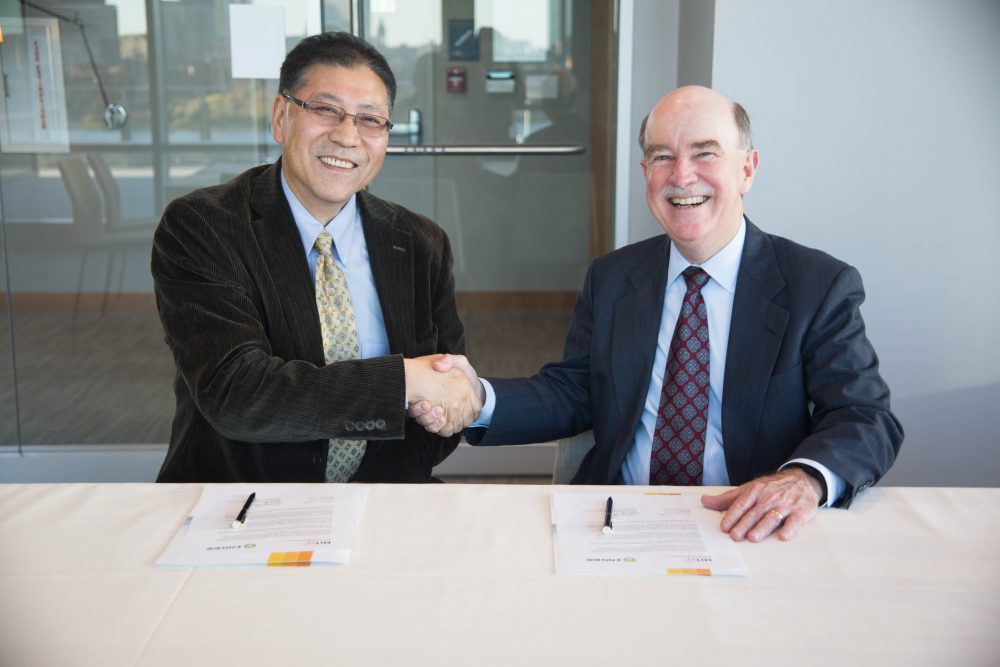
ENN states:
The world requires clean energy sources to sustain our ever-increasing energy demands. As climate change deepens due to increasing fossil fuel use, fusion has been regarded as “The Ultimate Energy Source”, capable of generating nearly inexhaustible carbon-free energy.
Since the 1950s, scientists have sought to create and control nuclear fusion to generate electricity. Great endeavors in science, technology and engineering have ensued since then. Monumental progress has been achieved in research and development capability as awareness of challenges still to be overcome has increased. Opportunities present themselves for mankind to face this challenge and deliver practical fusion energy.

The ENN Fusion Engine Challenge (FUGINE) is a global program that seeks to attract dedicated scholars and innovators who are devoted to advancing fusion research and development. It is part of the ENN Carbon-free Energy Initiative (ENN-CFEI) launched by ENN Energy Research Institute, with an aim to leverage open innovation to solve the world's energy challenges and embrace a carbon-free future.
Both individuals and organizations are encouraged to participate and submit proposals. These will be reviewed by an international panel of scientists, engineers and academics according to technical merits. Substantive prizes as high as $150,000.00 USD will be awarded to the winners. All the prize winners will have the opportunity to become ENN’s technology partners, to work jointly toward the realization of the winning proposals.
Join the FUGINE Challenge Now!

Dr Matthew Moynihan writes critically on the topic, as follows:
From May 26th to 28th China hosted an alternatives fusion approach conference in the city of Xi'an. The conference focused on non-tokamak and featured talks on magneto-inertial fusion (MIF), heavy ion-beam ICF, plasma liner fusion and magnetic mirrors. America has no magnetic mirror machines anywhere our country; despite calls from US experts like Dr. Ken Fowler, Dr. Ralph Moir and Dr. Simeon to do so. Guests were given a tour of the new fusion effort taking flight the ENN energy holdings.
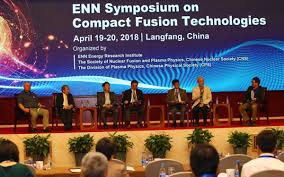
ENN is a billion-dollar energy company in central china that has started a private fusion research effort. The company is flush with cash. They have sunk ~$10 million over 2 years into duplicating the Princeton Field Reversed Configuration (rotamak) over in China; they have also hired a staff of 30 to drive the effort.
ENN also has plans to build a 1 Mega-Amp Spherical Tokamak. To make matters worse, after the conference, a top fusion scientist - Dr. Francis Thio hio – was hired away from his position as CEO of HyperJet fusion. Dr. Thio previously served as a program manager at the DOE. Dr. Thio is an expert in plasma liner fusion – a technology that the US has a healthy lead in - and that China had not previously been pursuing.
So far, there is little published by ENN Energy in English mainstream media about its specific fusion power initiatives, though the company's Center for Compact Fusion Research publishes extensively in scientific journals.




Science Alert published a discussion of the company's plan on December 29, 2017, stating: Their hydrogen-boron reactor works by triggering an "avalanche" fusion reaction from a laser beam packing a quadrillion watts of power in just a trillionth of a second. "The fuels and waste are safe, the reactor won't need a heat exchanger and steam turbine generator, and the lasers we need can be bought off the shelf," says Warren McKenzie, managing director of HB11, which owns the patents to the new technology.
25. Fuse Energy in Montreal does not have a public website, but has established a Facebook page. The company is headed by Max Yaney, who previous founded Titan Aerospace. Fuse intends to "take in ideas and then evaluate them." The company's stated missions are: (1) To bring fusion energy to life and create universal abundance; and (2) To solve our species' energy demands and to provide endless clean energy. A highly credentialed advisory panel has been assembled, including former Google staffers, among others.

To be blunt, Fuse Energy's goals, methods and design are presently quite vague. The company seems to have a "tech startup" feel. Time will tell if something more specific develops.

26. First Light Fusion was started in 2011 as a spin-out from Oxford University in the UK. The company is reported to have raised tens of millions of pounds from Parkwalk Associates. The goal of the company is to re-work "everything about inertial confinement fusion compression." The company are examining compression with a single laser, trying different target designs (encasing fuel in gels, glass, different target shapes and sizes, etc.). Dr. Stephen Chu (a Nobel Prize winner and former US Energy Secretary) sits on the company's science advisory board.
The company states the following:
First Light Fusion Ltd is a lean, focused and agile corporation researching energy generation by inertial confinement fusion. The company was spun out from the University of Oxford in June 2011 and is based near Oxford. First Light continues to work closely with the academic community, both in the UK and internationally. The company is well-funded by both institutional investors and private individuals.

Inertial confinement fusion for energy generation is a well-established research field and is being pursued in many laboratories worldwide, perhaps most notably in the US at the National Ignition Facility.

First Light is exploring a number of alternative research directions that harness the same fundamental physics, with the prime focus being power generation. First Light’s work to date has included theoretical analysis, detailed numerical simulations and experimental validation. This has allowed description of accessible parameters, and has led to a clear vision of the pathway to fusion.
First Light has also considered the costs and engineering practicalities of a reactor implementing its technology and can articulate a number of advantages over other approaches. We are pursuing pulsed power driver technology, which we believe will reduce costs by an order of magnitude.

Additionally, the energy focusing processes being pursued form the foundations of a new technological platform where secondary opportunities exist in a number of alternative applications, for example material processing and chemical manufacture.
An exhaustive project to test the viability of the company's proprietary fusion island concept by the UK Atomic Energy Authority (UKAEA) has recently concluded (2019) that the project is viable – giving First Light Fusion the green light to proceed with real-world tests of its technology.
The company's fusion island sub-system is a unique design aspect, responsible not only for converting the fusion energy into heat but also for managing the fuel supply in a fusion power plant.
It is novel because rather than encouraging a symmetrical implosion – an approach taking with traditional fusion reactor designs that is plagued with inherent instabilities in the reaction process – it harnesses the instabilities of the process to encourage an asymmetrical approach.

The design has the potential to achieve the net power gain because it tackles three of the biggest issues that have plagued fusion reactor design – with the recent UKAEA study verifying that the fusion island successfully tackles these.
(1) The first is neutron damage, where over time radiation from the high-energy streams of neutrons that make up much of fusion energy cause damage to the structure of reactors. Neutron damage can be a problem in fission too, but it is far worse in fusion because the larger amounts of energy generated mean higher neutron energies.
The way the fusion island handles these streams of neutrons means, according to First Light Fusion, that there is less damage to the structure – making the long-term running of the reactor in question more viable.
.jpg?ext=.jpg)
(2) The second is heat flux, the density of energy flowing through the reactor. If there is too much energy concentrated in one place within a reactor for too long, this too can cause severe problems with its operation – something that the fusion island is designed to handle.
(3) The third is tritium production. Tritium is one of the key fuels in most fusion reactor designs, as it is combined with deuterium to increase the rate at which the fusion reaction proceeds. With a half-life of only 12.3 years, tritium is exceptionally rare in nature.
As a result, it can most efficiently be produced in the reactor itself through the exposure of a lithium-based coating on the reactor’s inner walls to neutron radiation. When lithium is exposed to neutron radiation, tritium is a naturally-occurring reaction product.

Not only does the fusion island enable this reaction, the UKAEA study also confirming that its design allows the material to be pure lithium – removing the need for a lithium material to be custom-created for the design.
“It is hard to overstate the importance of being able to make the power plant from existing materials, like natural lithium,” explains Nick Hawker, founder and CEO of First Light Fusion. “This has the potential to bring fusion power to market up to a decade sooner.”
27. AGNI Fusion is obviously in the early stages, having grown out of an award-winning science fair project in 2011, which was recognized by President Obama at the time.
![Reactor Overview [1]-01.png](https://images.squarespace-cdn.com/content/v1/58839c83cd0f6828c5b4f4f1/1523929485656-EOAPS4VD5AEXRKZQ5QE9/ke17ZwdGBToddI8pDm48kHrc1MjerlPyvrcskIUfn8l7gQa3H78H3Y0txjaiv_0fDoOvxcdMmMKkDsyUqMSsMWxHk725yiiHCCLfrh8O1z5QHyNOqBUUEtDDsRWrJLTm4LaxnXTLZEIl_I4gL2tysgVY3WZI8G1fr8m3QW-5OeUz2HyGJsYIrucoxYXQ_z6D/Reactor+Overview+%5B1%5D-01.png?format=500w)
Winner of the 2011 Intel International Science and Engineering Fair. Photo taken during a private briefing with President Obama.

The AGNI group are attempting a beam approach to fusion, outlined as follows:
ION SOURCE
Deuterium and He3 are injected into the chamber where they are ionized and accelerated into an ion beam.
MAGNETIC FOCUSING LENSES
These lenses serve to excite the ion beam and control it so it doesn’t stray off course on the way to the target. They also serve to periodically increase the density to induce ionic heating through deuterium-helium-3 fusion.
TRITIUM TARGET
The target is made of Lithium BoroTritide and has the highest density of Tritium by volume. Here, the excited deuterium hits the target with a large amount of kinetic energy and fuses with tritium, creating a vast surplus of energy.
AGNI is expected to achieve:
16 million times the efficiency of coal
10 times the efficiency of fission
No Waste
Zero Emissions
The product of deuterium and tritium fusion is helium-4 and a neutron. Helium-4 is a rare resource that does not stick around the Earth once in the atmosphere, and is needed for scientific equipment like MRIs. The neutron is the main carrier of energy, holding 14.1 MeV, that will be used to power a steam turbine, generating electricity.
28. Horne Technologies. Based in Denver, this company's stated goal is to develop the world's first continuous-operation enabled, superconducting, high-beta fusion research device, with a design comparable to the Lockheed Martin approach, but ideally "simpler."

The company states:
Fusion itself is fairly easy, even young people at the high school level have built simple fusion reactors called fusors for science projects. Why then do we not have all our electricity produced from fusion? The problem is optimization. Although fusion is easy, it is not easy to get energy from it. In fact no one has ever come close to break-even, the point at which you produce more energy than you use.
Horne Technologies is here to change that. Our prototype is complete.
Fortunately, and unfortunately, while it has been easy to burn fossil fuels on Earth for energy, this is not feasible in space. Without such an abundant energy source, expanding into the solar system will be very difficult. The space race of the 1960s created many of the technologies we use every day. Using this same methodology offers a great path to fusion.

A hybrid approach and technology is being implemented to develop fusion technology for terrestrial and space energy applications. Fusion is the disruptive energy of the future.

Four core technologies are combined with state of the art high-temperature superconductors to improve the performance of the fusion device:
I) Inertial Electrostatic Heating (IEC)
II) Superconducting, Magnetically-Shielded Grid
III) High-Beta Capable Fusion Core
IV) Ion-ion and ion-neutral thermalization mitigation optimization
For 10 years Horne Technologies has been working on these fusion technologies to create optimized solutions for a viable fusion reactor for use in space and on Earth.
Horne Technologies' large vacuum chamber will house the second-generation core device. The second-generation will provide the optimization and parameter data to prove feasibility and acquire data to create a device capable of net energy.
Our second-generation device is a huge leap in technology:
- Improved coil structure
- Advanced cryogenic cooling
- Advanced plasma diagnostics
- Mitigation of the ion-ion thermalization loss mechanism
- Validation of all required technologies
- Final proof of concept
29. US Navy. Popular Mechanics reported on October 10, 2019, that a patent filed by the U.S. Navy last month claims to have developed a compact Nuclear Fusion Reactor. Popular Mechanics notes that nuclear fusion has been touted as the ultimate energy source, generating enormous amounts of power with little to no harmful byproducts. However, no one has yet been able to mass produce or control large quantities of fusion energy, so designs for the reactor seemingly stretch the limits of science.

The magazine reports:
The U.S. Navy has filed a patent for a compact fusion reactor, according to exclusive reporting by The War Zone.
The patent for the device was reportedly filed on March 22, 2019, and published late last month. This technology, by all accounts, is "a long shot." But, if successful, it would completely revolutionize how we power our world.
In order to create fusion energy on Earth, scientists and engineers must build instruments that can contain gases that will reach temperatures of hundreds of millions of degrees in order to compel atomic nuclei to collide at high speeds to create a superheated plasma.
One kilogram of fusion fuel produces the same amount of energy as 10 million kilograms of fossil fuels. It’s the perfect energy source; it doesn’t emit greenhouse gases or leave behind harmful byproducts such as nuclear waste—unlike nuclear fission. In fact, its sole byproduct is helium: an inert, extremely useful gas.
Current reactors are approximately the size of a building; a relatively portable compact fusion reactor, one designed to power relatively small vehicles, would be a game-changer. The Chinese government, Lockheed Martin, and several other private companies have made inroads in shrinking the technology, and the Navy is investigating a unique approach. This device, according the The War Zone, could potentially fit on a boat or an aircraft.
The success of the device, developed by researcher Salvatore Cezar Pais of the Aircraft Division of the Naval Air Warfare Center, relies on a dynamic fusor component. According to the patent, Pais’ plasma chamber contains several pairs of dynamic fusors, which rapidly spin and vibrate within the chamber in order to create a “concentrated magnetic energy flux” that can compress the gases.
Coated with an electrical charge, the cone-shaped fusors pump fuel gases such as Deuterium or Deuterium-Xenon into the chamber, which are then subjected to intense heat and pressure to create the nuclei-fusing reaction. In contrast, current technology at reactors around the world use superconductors to create a magnetic field.
The War Zone reports that the device could potentially produce more than a terawatt of energy while only taking in power in the kilowatt to megawatt range.
Dr. Matthew Moynihan is currently conducting a review of the US Navy proposal, aspects of which are unconventional and controversial (personal communication).
30. Convergent Scientific, Inc. (CSI) CSI has developed a variation of the Convergent Ion Focus (CIF) approach to fusion energy generation, which is capable of producing extremely energetic non-neutral plasmas at much lower relative input energy requirements. The design is based on 50 years of research, specifically the Inertial Electrostatic Confinement (IEC) design. The small company has built and tested one prototype, and intends to retrofit coal-fired power plants with convergent ion focus technology.

The principals of the company are:
Robert Clarke Blair
Chief Operating Officer
Clarke has spent 25 years helping companies implement earned value and project management systems, with the last 14 years devoted to implementing Oracle/Primavera products, with emphasis on process improvement and enterprise-wide portfolio/resource management. He provides leadership and training to help organizations make the changes required (especially in human behavior) to implement enterprise-level project management software.
Devlin Baker
Chief Technology Officer
Devlin holds Bachelors of Science degrees in Physics and Mathematics, Western Washington University, 2008, with additional concentrations in Electrical Engineering, Astronomy, and Geology. He has been involved in experimental physics, software development and computer aided design for the last eight years. He has been working with small scale electrostatic (IEC) fusion reactors since fabricating his first prototype in 2001.
Joel Rogers
Chief Technical Advisor
Joel holds a Bachelor of Physics from MIT (1965) and a PhD in Nuclear Physics from UCLA (1969). He was a research scientist at Canada's "TRIUMF" in Vancouver, BC, from 1973 to 2004. He has published over 100 articles in refereed journals such as Physical Review, Nuclear Physics, and Nuclear Instruments and Methods. He is the holder of five U.S. patents, and the author of a currently pending patent, “Modular Apparatus for Confining a Plasma.”
31. HyperV Technologies Corp. is a privately held fusion energy research and development company founded by Dr. F. Douglas Witherspoon in 2004 and located in Chantilly, Virginia, U.S.A. The company combined with HyperJet Fusion Corporation in 2017 (see below), keeping the original address. The company specializes in the development of unique ultra-high performance plasma guns for use in fusion energy, plasma physics research, and industrial applications. The name HyperV comes from the word “HyperVelocity” and references the extremely high velocities achieved by plasma when formed and fired from the company's plasma guns.

Since its establishment in 2004, HyperV Technologies Corp. has received funding through a series of research grants from the U.S. Department of Energy’s Office of Fusion Energy Sciences (OFES). HyperV was awarded these grants and numerous SBIR’s, following a highly competitive proposal and rigorous scientific peer review process.

In continuing the advancement of its fusion energy research and development effort, HyperV states that it has teamed with the "legendary" Los Alamos National Laboratory (LANL) of New Mexico. This HyperV/LANL partnership is focusing on the design, development and operation of the PLX-α experiment located at LANL in New Mexico and funded by the DOE Advanced Research Projects Agency-Energy.
In addition to its plasma gun development effort, HyperV is developing extremely fast fiber-coupled imaging systems for diagnostics applications in plasma physics, aerospace applications and other industrial processes.

Interestingly, HyperV Technologies has been researching Plasma Jet Magneto-Inertial Fusion (PJMIF), with the intention that its plasma electric thruster technology will be ideal for propelling spacecraft within the solar system. For example, the company's technologies enable the use of solar panels for electric power out to at least the asteroid belt beyond Mars without requiring a "large unwieldy array" of solar panels. For beyond the asteroid belt, in the darker outer solar system, a compact fission reactor capable of providing electrical power for years is identified the most practical energy source.
The company states:
We have identified a unique new approach to using a non-gaseous propellant, which maintains the same high Isp and thrust of argon or xenon gas propellants in our thruster. This new propellant approach provides the E3P thruster technology with the following advantages:
1) The non-gaseous propellant is completely inert and non-toxic, and requires no high-pressure propellant tanks which can explode, or valves which can fail. Given that the propellant is inert and non-toxic, it is an ideal candidate technology for safe use with, and storage aboard, manned platforms and on cubesats.
2) This thruster technology could enable interplanetary missions on cubesat spacecraft as small as 6U (briefcase size spacecraft) and with similarly low cost.
3) It is scalable up to large spacecraft in the kilowatt power range.
4) It can be throttled for fine maneuvering of the spacecraft.
5) Both the thruster technology and propellant are mechanically robust.
6) It has high thrust per unit area, taking up less space on the rear of the spacecraft.

On October 17, 2017, HyperV Technologies announced that it has begun the process of merging with HyperJet Fusion Corporation. Dr. Y. C. Francis Thio was appointed as the President and CEO of HyperJet Fusion Corporation, but left the position in 2019 to join a better-funded fusion power initiative with ENN Energy in China (see #33 below). Dr. Thio is also the inventor of both Plasma Jet Driven Magneto Inertial Fusion (PJMIF) and the contour-gap coaxial plasma gun, a leading candidate for use as the PJMIF reactor plasma driver. The fusion energy approach that HyperJet Fusion is developing has previously been known as Plasma-Jet driven Magneto-Inertial Fusion (PJMIF). Since hypersonic jets play a key role in the fusion scheme, the fusion approach is being renamed hyperjet fusion, hence the name of the company.

HyperJet Fusion Corporation intends to continue to build on the development efforts of the NASA Marshall Space Flight Center, Los Alamos National Laboratory, and HyperV Technologies Corp. To date, hyperjet fusion research and development has been funded by NASA, DOE Office of Fusion Energy Sciences (FES), and the Advanced Research Projects Agency-Energy (ARPA-E). This investment represents nearly $28 million from the U.S. government.

Strong Atomics, a private fusion energy investment fund, has also providing seed investment funding to HyperJet Fusion Corporation. Additionally, the founder and President of HyperV Technologies Corp. Dr. F. Douglas Witherspoon, is now the Vice President and COO of HyperJet Fusion. The merger includes the transfer of all personnel, facilities, equipment and intellectual property developed by HyperV Technologies Corp to HyperJet Fusion.

Dr. Thio, now working in China, stated the following on behalf of HyperJet Fusion in 2017: “Our company has inherited tremendous experience and valuable scientific data from the development of HyperV’s proprietary plasma gun technology. In addition to fusion energy, our plasma guns also have promising applications in the fields of micron and submicron metallic powder production, thermal spray, space propulsion (including fusion propulsion), and high energy density plasma research. The plasma guns can be used to refuel the plasma in experimental tokamak fusion reactors, as well as mitigate the destructive effects of plasma disruption events. They can also be used for driving rotations in tokamak and other plasma devices. As part of the effort to better understand the complex science of plasmas, an array of unique high performance diagnostic and data capture tools have been developed. This exclusive line of diagnostic and data capture tools is now also available for sale through HyperJet Fusion Corporation.”
32. Compact Fusion Systems in Santa Fe, New Mexico, so far has no online presence. The company's design employs liquid metal surrounding a plasma core, with some parallels to General Fusion's strategy. CFS, in turn, is a spinout venture from Woodruff Scientific, Inc., of Santa Fe, New Mexico and Seattle, Washington. The aim of CFS is to "develop a prototype (fusion) power core."

CFS has "a solid technical team of former researchers from Kirkland Air Force base, NRL and two private firms." The company recently raised funds via Strong Atomics, a new venture capital firm, focused solely on fusion power initiatives.
Strong Atomics, in turn, intends to invest in a portfolio of varied fusion projects, selected based on their potential to create net-positive energy and to lead to plausible reactors. In addition to CFS, Strong Atomics has also invested in FuZE (Zap Energy), MIFTI, and HyperJet Fusion, all of which have been discussed above.
33. ENN Energy in China, a well-capitalized private renewable energy company, has recently initiated multiple fusion power projects, including both a rotamak design and spherical tokamak, based on designs pioneered at Princeton University, but relatively poorly funded in the United States. ENN also hosts fusion energy symposia, and has actively been hiring leading researchers in the field, as summarized below. ENN is also a partner with MIT in energy storage technology development.

Zhu Zhenqi (left), president of ENN Energy Research Institute, and Robert Armstrong, director of the MIT Energy Initiative, sign the agreement for ENN's membership in MITEI's Center for Energy Storage Research. Credit: Kelley Travers/MITEI
ENN states:
The world requires clean energy sources to sustain our ever-increasing energy demands. As climate change deepens due to increasing fossil fuel use, fusion has been regarded as “The Ultimate Energy Source”, capable of generating nearly inexhaustible carbon-free energy.

The ENN Fusion Engine Challenge (FUGINE) is a global program that seeks to attract dedicated scholars and innovators who are devoted to advancing fusion research and development. It is part of the ENN Carbon-free Energy Initiative (ENN-CFEI) launched by ENN Energy Research Institute, with an aim to leverage open innovation to solve the world's energy challenges and embrace a carbon-free future.
Both individuals and organizations are encouraged to participate and submit proposals. These will be reviewed by an international panel of scientists, engineers and academics according to technical merits. Substantive prizes as high as $150,000.00 USD will be awarded to the winners. All the prize winners will have the opportunity to become ENN’s technology partners, to work jointly toward the realization of the winning proposals.
Join the FUGINE Challenge Now!

Dr Matthew Moynihan writes critically on the topic, as follows:
From May 26th to 28th China hosted an alternatives fusion approach conference in the city of Xi'an. The conference focused on non-tokamak and featured talks on magneto-inertial fusion (MIF), heavy ion-beam ICF, plasma liner fusion and magnetic mirrors. America has no magnetic mirror machines anywhere our country; despite calls from US experts like Dr. Ken Fowler, Dr. Ralph Moir and Dr. Simeon to do so. Guests were given a tour of the new fusion effort taking flight the ENN energy holdings.
ENN is a billion-dollar energy company in central china that has started a private fusion research effort. The company is flush with cash. They have sunk ~$10 million over 2 years into duplicating the Princeton Field Reversed Configuration (rotamak) over in China; they have also hired a staff of 30 to drive the effort.
ENN also has plans to build a 1 Mega-Amp Spherical Tokamak. To make matters worse, after the conference, a top fusion scientist - Dr. Francis Thio hio – was hired away from his position as CEO of HyperJet fusion. Dr. Thio previously served as a program manager at the DOE. Dr. Thio is an expert in plasma liner fusion – a technology that the US has a healthy lead in - and that China had not previously been pursuing.
So far, there is little published by ENN Energy in English mainstream media about its specific fusion power initiatives, though the company's Center for Compact Fusion Research publishes extensively in scientific journals.

34. Helicity Space is a San Francisco Bay area startup that has recently joined the Fusion Industry Association. The company reports that its mission is to develop critical propulsion and power technologies necessary for enabling humanity's expansion into the solar system.

Using a proprietary helicity drive based on "rigorous science and modern technologies," the company's scalable technology is intended to be "innovative, compact, and realistic." The helicity drive fusion concept merges several plasma plectonemes (loops of helices twisted together such that they cannot be separated without breaking them) in a constant-energy compression magnetic nozzle. The efficiency of magnetic reconnection is exploited for heating, the stability of plectonemes for confinement, and the symmetry of passive coils for magnetic compression.

This approach is expected to operate efficiently at modest fusion gains and also to scale to ignited operation when ultimately deployed.

Plasma Physics Programs, Research Facilities, Components Manufacturers, Industry Associations, Discontinued Programs, and Planned Fusion Power Projects
1. Many universities and institutes have plasma physics programs, including the University of Alberta, University of Saskatchewan, and University of Montreal in Canada, just for example (already mentioned: MIT, Princeton, UCLA); many more in North America and around the world. Here is a global listing of larger plasma science laboratories, which is far from exhaustive (e.g., none of the Canadian labs is listed): Plasma Labs.
2. Italy is engaged in advanced research at the Institute of Plasma Physics --- Italy has long been a leader in high energy physics. The Italian Institute is really only one example of the dozens of plasma physics labs around the world.
3. UCLA --- a leader in plasma science and plasma confinement. Dr Francis Chen is currently compiling a textbook on helical plasmas (personal communication). He is the author of the standard textbook on plasma physics and controlled fusion reactions.
Dr. Chen has also recently completed a book, laying out a broad rationale and plan for the development of practical fusion power: An Indispensable Truth: How Fusion Power Can Save the Planet (2011).

I consider Dr. Chen's work to be extremely important.
4. Z Machine, Sandia National Laboratories. Sandia is one of only three fusion research centres currently employing deuterium-tritium fuel, as tritium costs tens of thousands of dollars per gram, because it does not occur naturally. Rather, tritium is produced in nuclear reactors as a byproduct of fission reactions. As the Sandia Lab is research-focused rather than development-focused, and also because it investigates both fission and fusion, the decision to employ tritium at this site is perhaps understandable. In the presence of water, including humidity in the air, tritium can form tritiated water, which is at least ten thousand times more biologically hazardous than pure T2 gas. That is a special concern at the Z machine, which insulates electrical components in pools of oil and water. At the Lawrence Livermore NIF, tritium presents fewer hazards because it is contained within a tiny sphere during transport, and workers don't often enter the interior of the machine.

Sandia's capsule, in contrast, is open at both ends, and the violent implosion mixes unburned tritium with vaporized metal that "sprays everywhere," requiring the centre of the device to be completely removed and replaced after every injection. Sandia is nevertheless moving forward with tritium, in part because it generates extra neutrons that reveal what is occurring in the hottest, densest part of the short-lived plasma, where the physics is not as well understood. In three planned trials next year, the tritium containment system will be removed from around the target both to test an air-purging safety system and to get a clearer view of the neutrons.
5. Laboratory for Laser Energetics (LLE). The LLE is a scientific research facility employing the OMEGA laser, which is part of the University of Rochester's south campus, located in Brighton, New York. SImilarly to Sandia, the LLE is a research rather than a development facility. The lab was established in 1970 and its operations since then have been funded jointly; mainly by the United States Department of Energy, the University of Rochester and the New York State government. The Laser Lab was commissioned to serve as a centre for investigations of high-energy physics, specifically those involving the interaction of extremely intense laser radiation with matter. Many types of scientific experiments are performed at the facility with a strong emphasis on inertial confinement, direct drive, laser-induced fusion using OMEGA, currently the world's highest-energy ultraviolet laser.
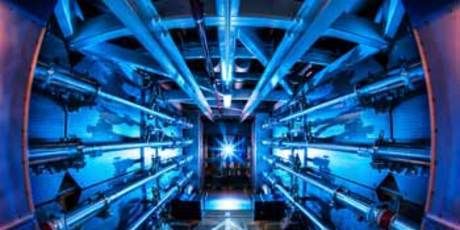
The OMEGA laser at the LLE is also one of the most powerful and highest energy lasers in any class in the world. It is a 60-beam ultraviolet frequency-tripled neodymium glass laser, which is capable of delivering 30 kilojoules at up to 60 terawatts onto a target less than 1 millimeter in diameter. Construction and commissioning of the laser were completed in 1995. OMEGA held the record for highest energy laser (per pulse) from 1999 to 2005, when the first 8 beams at the National Ignition Facility exceeded OMEGA's output by about 30 kJ in the ultraviolet. The maximum fusion yield of OMEGA so far is about 10^14 neutrons per shot (first achieved in 1995), and it once held the record for highest neutron yield of any inertial confinement fusion device. The laboratory is unique in conducting "big science" on a university campus.
6. Costa Rica Stellarator-1 (SCR-1). The SCR-1 was recently constructed and tested the campus of the Technology Institute of Costa Rica in Cartago province. Costa Rica is now the sixth country to have developed a stellarator, along with the U.S., Japan, Spain, Australia and Germany. Testing of the stellarator represents the first discharge of high temperature plasma in Latin America.
7. H-1NF is the Australian Plasma Fusion Research Facility. The H-1 flexible Heliac is a three field-period helical axis stellarator located in the ANU Research School of Physics and Engineering at Canberra, Australia. Optimization of the H-1 power supplies for low current ripple allows precise control of the ratio of secondary (helical, vertical) coil to primary (poloidal, toroidal) coil currents, resulting in a finely tunable magnetic geometry. Slight variation in the current ratio between shots (plasma discharges) in a sequence corresponds to a high resolution parameter scan through magnetic configurations (e.g., rotational transform profile; magnetic well). The programmable control system allows for repetition rates of around 30 shots per hour, limited by data acquisition time and magnet cooling time.
8. Energy/Matter Conversion Corporation, Inc. (aka EMC2) --- founded in 1985 by Robert Bussard (died 2007) --- developing a Polywell reactor, using inertial electrostatic confinement (positively charged particles are aimed at negatively charged particles at high speeds). Appears to be inactive currently.
9. Russia --- The famed physicist and peace activist, Andrei Sakharov (May 21, 1921-December 14, 1989), invented the tokamak design, but sadly, Russia is currently lagging the field. The T-15 reactor at the Kurchatov Institute, the first industrial prototype fusion reactor to use superconducting magnets, was closed in 1995 for lack of funds. Russia proposes to develop a post-ITER hybrid fission-fusion reactor to be named DEMO-FNS (for Fusion Neutron Source). A small tokamak (R=1.9 m) would generate the neutrons necessary to produce fission fuel and to transmute radioactive waste.
10. General Atomics in the US has no plans to develop a commercial fusion reactor, but it does carry out considerable plasma and magnetic confinement research, maintains the DIII-D Plasma Control System, and supplies components to many of the projects mentioned here (including ITER, KSTAR, EAST, MAST and many others). The mission of the DIII-D Control group at General Atomics is to develop the control knowledge and solutions needed to enable tokamaks to operate disruption-free with required levels of robust high performance. Development of integrated plasma control (IPC), a systematic approach to model-based design and controller verification, has enabled successful experimental application of high-reliability control algorithms requiring a minimum of machine operations time for testing and tuning. GA reports that is is active in developing and supplying the following:
MAGNET TECHNOLOGIES
GA is fabricating the Central Solenoid for the international ITER project, an unprecedented scientific partnership that aims to demonstrate the feasibility of fusion power as a clean-energy resource on a global scale.
COIL WINDING
Coil Joining
Superconducting Coil Heat Treatment
Coil Insulation
Cryogenic Systems & Cold Testing
Tokamak Operations and Engineering
GA provides a wide array of fusion technology products from gas injection systems to diagnostics and imaging.
HIGH-POWER NEUTRAL BEAM INJECTOR SYSTEMS
Electromagnetic Simulations
Cryogenic Systems
Vacuum Systems
Mechanical Systems
Control Systems
Microwave Technologies
GA supplies a full array of corrugated waveguides and high- and low-power microwave transmission systems and components.
HIGH POWER & HIGH VOLTAGE SYSTEMS
Low-Power Microwave Systems
Power Systems
Corrugated Waveguide Systems
PLASMA CONTROL SYSTEMS
GA supplies design resources, technologies, and integrated systems for control of magnetic fusion plasmas to government and private laboratories worldwide. GA has adapted and deployed its DIII-D Plasma Control System at more than a dozen toroidal magnetic confinement facilities including NSTX, Pegasus, and MST in the United States, and EAST, KSTAR, KTX, and MAST in Asia and Europe.
11. China, Europe and Japan have also proposed post-ITER projects, all of which will be named "DEMO." DEMO is meant to be the machine that will bring fusion energy research to the threshold of a prototype fusion reactor, thus opening the way to its industrial and commercial exploitation. The term DEMO describes more a developmental phase than a single machine. For the moment, different conceptual DEMO projects are under consideration by all ITER Members (China, the European Union, India, Japan, Korea, Russia and, to a lesser extent, the United States). It has not yet been determined whether DEMO would be an international collaboration, similarly to ITER, or a series of national projects. China, after having explored physics and technological issues in a test reactor built in the 2020s (the China Fusion Engineering Test Reactor, CFETR), also plans to launch the construction of a DEMO reactor in the 2030s. The European Union proposes a 500 MW DEMO reactor. The Japanese have shared plans for a 1500 MW DEMO reactor. My own guess is that ITER is unlikely to serve as the foundation for future fusion reactors. Rather, the future is much more likely to see compact designs, and it's probable that a variety of reactor models will be commercialized, as well, building on ideas that are already more advanced than anything under consideration at ITER (which is fundamentally an expansion of the 40-year-old JET design!).
12. I can't close without mentioning the Fusion Energy Consortium, who hope to pool private funds for the incubation of fusion power development. The consortium states: By the end of this century the world will have depleted economically viable fossil fuel reserves. At the same time the worldwide demand for energy will double. Renewables such as solar, wind, geothermal, etc., are wholly inadequate to supply the world’s electrical power needs let alone the needs of the transportation and agriculture sectors. If mankind cannot develop a new source of energy of the magnitude of fossil fuels, worldwide population will drop by a factor of 10 to pre-industrial age levels. Today’s atomic fission based nuclear power is the only energy source that can meet the 22nd Century’s energy demands. However it has too many dangerous problems to be implemented on such a vast scale. The only known solution is the development and commercialization of a different type of atomic energy known as fusion energy. Although scientists have been studying fusion for over 60 years they have not been able to harness it in a controlled environment. For a variety of political and sociological reasons no country has dedicated itself to developing fusion energy for the practical purpose of generating energy. The job can best be done in the private sector. However, the risks are too high based on our current level of scientific knowledge, and the costs are prohibitive. The solution is the Fusion Energy Consortium which will organize the tremendous amount of required capital and incentivize the private sector to take on this task in an efficient and collaborative manner. The public and political leadership will become educated on the tremendous need to develop practical fusion energy. The Fusion Energy Consortium is a member sponsored U.S. IRS Title 26 501(c)(3) compliant LLC established as a foundation to stimulate the science, research, and development leading to practical controlled nuclear fusion energy.
13. Renaissance Fusion has also recently joined the Fusion Industry Association. The company intends to design and manufacture components for stelarators and high-temperature superconductors.

Renaissance Fusion states:
Superconductors are special materials that, under special conditions (e.g., low enough temperature), conduct electricity without any resistance. High-Temperature Superconductors (HTS) exhibit this property at comparatively higher temperatures (but still much lower than room temperature). Compared to conventional superconductors, they are able to carry higher currents and thus generate stronger magnetic fields, opening up new opportunities in medical imaging, levitated trains, magnetic confinement fusion and several other technologies.

Stellarators (like Wendelstein 7-X in Germany, pictured) are devices for the magnetic confinement of fusion plasmas, vaguely shaped like a doughnut. Tokamaks (like the ITER experiment under construction in France) are also doughnut-shaped. Tokamaks are relatively simple to build, but difficult to operate (pulsed and subject to “disruptions”, “ELMs” and other instabilities). By contrast, stellarators are simple to operate (steady-state and quiescent) but difficult to build, due to their complex shape.
Tokamaks are the most mature plasma-confinement technology, and stellarators rank second, but are rapidly catching up. If their construction could be simplified, stellarators would be strong candidates for a demonstrative (DEMO) fusion power-plant.
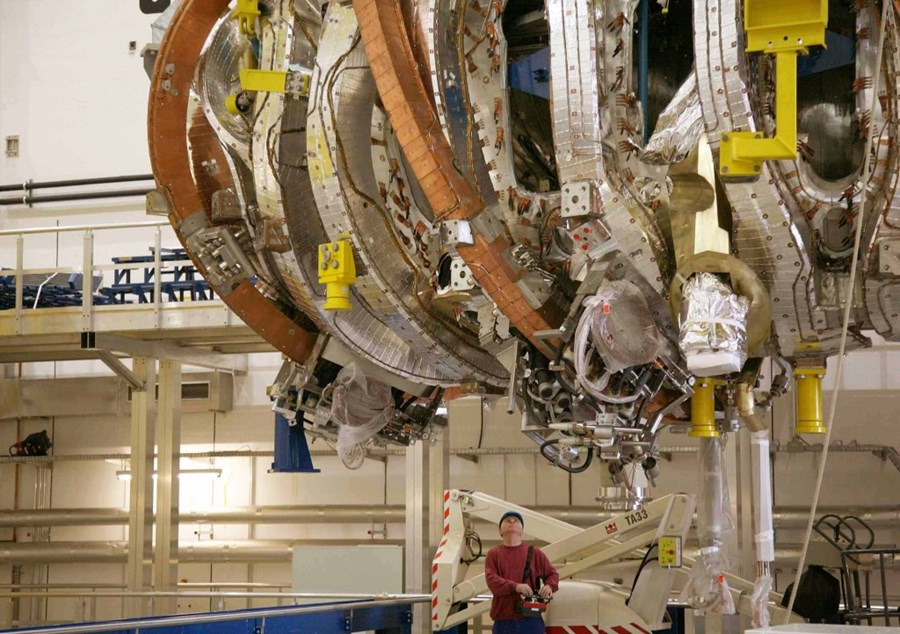
RENAISSANCE FUSION AIMS AT
1. Demonstrating a new HTS manufacturing technique with potential benefits for medical imaging and stellarator simplification.
2. Building the first high-field (10 T) HTS stellarator with thick, flowing liquid metal walls.
3. Putting fusion electricity in the grid within 13 years.
14. Superconductor Technologies, Inc., in Austin Texas has been developing high temperature superconducting wire for 32 years, and only now is the product coming to market. I've followed this company for several years. They have always talked in terms of using superconductors in power generation, but in a general way. Now, very recently, they are seeing fusion power as the primary focus of their technology, and the focus of the company's communications has clearly been aligned with this purpose in mind. It seems to me that many threads are coming together at once, as it has become increasingly evident that fusion is a near-term power technology --- it's not conceived of as a long-term project anymore!







14. Superconductor Technologies, Inc., in Austin Texas has been developing high temperature superconducting wire for 32 years, and only now is the product coming to market. I've followed this company for several years. They have always talked in terms of using superconductors in power generation, but in a general way. Now, very recently, they are seeing fusion power as the primary focus of their technology, and the focus of the company's communications has clearly been aligned with this purpose in mind. It seems to me that many threads are coming together at once, as it has become increasingly evident that fusion is a near-term power technology --- it's not conceived of as a long-term project anymore!

STI states:
Since its formation in 1987, STI has pioneered the development of superconducting materials and manufacturing processes, developing numerous patents as well as proprietary trade secrets and know-how. Over the last decade, STI has manufactured and sold over 6,000 superconducting systems that have been deployed in tier one wireless networks, thereby providing commercial deployments of its superconducting technology. Now, STI is applying its proven and proprietary superconducting deposition techniques and manufacturing experience to the development of cost effective, high performance superconducting wire for emerging large market opportunities with superconductor magnet applications such as Tokamak Fusion devices and Next Generation Electric Machines.
Conductus® is a superconducting wire used in the building of superconductor electrical devices in multiple applications in production today. Conductus® is a high current carrying conductor that provides dramatic performance improvements, higher power density, smaller size and significant cost benefits over conventional copper and aluminum wire. Conductus® wire is manufactured through a proprietary and highly refined deposition process called RCE-CDR. Conductus® superconducting wire is uniquely positioned to address three key areas of opportunity in the market: high performance, improved economics, and commercial-scale capacity.

Superconducting wire has traditionally been utilized in devices that are less cost sensitive and highly focused on proof of concept or high performance. This is anticipated to change as the improved economics of Conductus® wire enables the commercialization of new devices that are high performance as well as economical over conventional copper based solutions. The key factors in Conductus® wire’s cost benefits are:
Unlike Low Temperature Superconducting (LTS) wire that is commercially available with production in the hundreds of thousands of kilometers on an annual basis, High Temperature Superconducting (HTS) wire production remains limited and is not in supply in commercial volumes. STI is in the process of scaling capacity to commercialize our Conductus® wire. Our initial production machines have been installed in Austin, TX, with the final RCE-CDR production system, capable of 1km lengths.
Conductus® superconducting wire manufacturing approach utilizes simplified, layered wire architecture, designed to scale with high yield and commercial volumes. Conductus wire architecture consists of three key manufacturing processes. First, a commercial-grade stainless steel or hastelloy template is passed through an E-Polish process. Second, the template proceeds through an Ion Beam Assisted Deposition (IBAD) process in order to produce a template with the right surface conditions. Third, the High-Temperature Superconducting (HTS) materials are deposited onto the template using Conductus proprietary Reactive Co-evaporation Cyclic Deposition and Reaction (RCE-CDR) HTS deposition. As a final step, outside of the key manufacturing processes, a customer can request metal cap layers that cover the entire surface of the wire.

Conventional electrical equipment is limited by the performance of traditional copper and aluminum conductors. Existing electrical motors, generators, transformers, transmission cables and current limiters typically are built with copper-based conductors, utilizing 100’s to 1000’s of strands of wire. As the power requirement increases so does the quantity of the conductor, which in turn increased the system size and weight until ultimately it becomes impractical to build. Copper-based conductors are also inefficient. The U.S. Department of Energy (DOE) estimates that U.S.-wide transmission and distribution losses increased from about 5% in 1970 to 9.5% in 2001 due to higher utilization, heavier congestion, inefficiency and overall equipment failure that resulted in power outages and power quality disturbances. This costs the U.S. economy in excess of $25 billion annually.
Copper wire has less than 1% of the power density of our typical Conductus® wire. This 100 times or more increase in power density reduces the physical number of wire strands required per device; resulting in a significant reduction in size and weight. Conductus® wire also addresses the problem of efficiency by all but eliminating electrical resistance. Devices made with Conductus® wire are extremely efficient providing reduced cost of ownership.
Advanced transmission and distribution technologies are necessary to enhance Smart Grid efficiency, real-time management, throughput and reliability. Existing copper-based systems are prime targets for change through disruptive technology. New superconducting electrical devices, built utilizing Conductus® high efficiency wire, are well positioned to address this challenge.

The electric power industry is facing many challenges that threaten a utilities’ ability to deliver reliable and cost efficient power. These challenges include integration of renewable electricity, need for improved network efficiency, aging infrastructure, increased electrical demand and implementation of new Smart Grid technologies. Existing copper-based electrical conductors are inherently inefficient and cannot support the growing energy demand or Smart Grid infrastructure, making them prime targets for change through disruptive technology. At the heart of these NEW, adaptive, rapid-response networks is the need for advanced electrical conductors to transform the conventional, linear power architecture into a distributed, mesh infrastructure.
New, emerging, cost effective, high performance superconducting technologies provide unique benefits targeting Smart Grid infrastructure and offer an excellent alternative to conventional, copper-based solutions. Advanced, high power superconducting transmission cables and superconducting fault current limiters (SFCL) are game changing solutions with significant advantages. High power superconducting transmission cables improve total power by reducing voltage and increasing current; this reduces right-of-way, civil work and environment impact. SFCLs protect the grid from damaging faults, and enable power sharing between substations and connectivity to new sources of renewable power. These novel superconducting solutions are all made possible with superconducting wire. Superconducting solutions like SFCLs or superconducting cables are composed of 100s of superconducting wire strands ranging from 3 meters to 1000 meters in length. STI is collaborating with industry-leading, global electric utilities and device manufacturers to commercialize our best-in-class Conductus® superconducting wire for deployment.

In short, central power generation stations (i.e. nuclear, natural gas power plants) push high power current (500 to 3,000 Megawatts) through transmission lines (i.e. high power cables) to substations. Substations step down power to medium voltage via transformers and redistribute power to end users (i.e. residential, commercial, government and industrial customers).
This conventional grid layout is a highly centralized network. Centralized power system are vulnerable to costly down-time; one downed power line could potentially result in widespread blackouts costing businesses and taxpayers billions of dollars.
As demographic growth and consumer adoption of electronic devices drives increased per capita electricity demand, the aging grid infrastructure will likely exhibit lower stability and reliability if government and utilities do not implement much needed infrastructure upgrades.

Another major issue facing the worldwide electric grid is the addition of renewable energy generation sources. Existing power generation sources like nuclear or coal plants provide a consistent and reliable flow of energy to the grid. The grid then tries to distribute a level quality of power to all areas. However, new alternative power sources like wind and solar energy, even if efficient and sustainable, provide intermittent and varying amounts of electricity to the grid. Power levels fluctuate based on time of day for solar power and change in wind speeds for wind power. This variable output of power creates massive energy storage issues that the grid cannot tolerate. Growth in the renewable energy sector, like solar, wind and electric vehicles, require Smart Grid improvement for success. Technology advancements in energy distribution and transmission will drive down cost and improve efficiency. Lastly, future power demand could greatly exceed power generation. Much infrastructure investment is required to ensure future power stability.

8 FEB 2019. No discussion of the potential and promise of fusion power would be complete without a consideration of the social and technological obstacles. This recent article from the Bulletin of the Atomic Scientists highlights some of the more serious technological issues, which require more discussion by fusion's proponents than I'm currently seeing!
15 MARCH 2019: Importantly, there is now a Fusion Industry Association, which was formed recently (in 2018) to advocate for fusion power technology development. I have blogged on this topic separately, here.
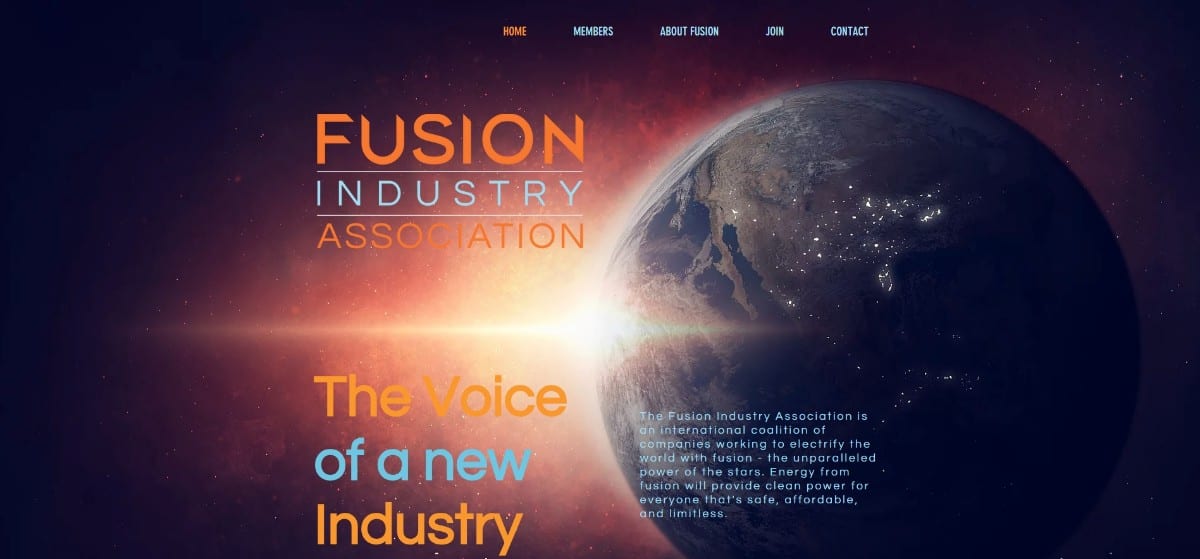
The Association states: The Fusion Industry Association is a registered non-profit organization composed of private companies working to commercialize fusion power. The Association advocates for policies that would accelerate the race to commercial fusion energy. The fusion industry and its individual companies are eager to partner with governments to advance the shared goal of fusion innovation.
Altogether, over $1 billion in private capital has been invested in private companies with transformative approaches to fusion. They share the goal of developing economically viable commercial fusion power as soon as possible. Private companies are aiming to streamline the pathway to a fusion power plant, while working in cooperation with longstanding government-supported fusion sciences programs.
2 APRIL 2019: A Russian blogger with technical knowledge, using the online name "Valentine," has published an Overview of fusion startups in the world (click here). This review overlaps considerably with my own, though the author has identified some additional, early-stage (conceptual) projects, and has not addressed the wide range of government-sponsored programs apart from ITER, particularly in Asia. Valentine's purpose is to evaluate the technical stage of advancement of the various projects, which may be helpful to some readers. He has somewhat strong opinions, and is not always using the most up-to-date information. For example, he does not mention Commonwealth Fusion Systems when referring to the MIT SPARC project, and refers to TAE Technologies by its former name (Tri Alpha Energy). However, this overview is the best independent summary I've so far found of fusion projects in development, and the engineering perspective is helpful in many ways.

2 April 2019. I had posted a link here to the Fusion Energy League, which no longer appears to have a website, though a Facebook page has been established: click here. The organization is one of the proponents of boronic fusion, which is essentially radiation-free, producing electricity, rather than neutron radiation as its primary output.
The League states:
The worldwide mining of Boron ores results in the production of ~1 million tons of Boron per year. The use of this Boron natural resource for power generation would result in production of 1.725 × 10^16 kW-h of energy.

* 14 October 2019. I provided the following point form summary (in an earlier draft form) to Ariel Cohen, who is a professional energy analyst:
In my judgement, the most advanced projects in the private sector, based on publicly available information, are:
1. Commonwealth Fusion Systems, MIT. Eni Energy seed grant of $150 million and Vinod Khosla is an investor. 40-foot diameter machine. This will get built.
2. Tokamak Energy, UK. Compact spherical tokamak, private money, good scientific support. Developing generations of prototypes, as most do.
3. Lockheed Martin Skunk Works. Few technical details, but well-funded, making dramatic announcements. Very compact design if they can pull it off. The small size has been questioned by independent analysts. Several recent announcements. Currently at stage 5 out of 8 stages. They plan commercialization by 2028. Very bold public statements.
4. TAE Technologies. Aiming for super high temperature boronic fusion, which produces electricity vs. (hazardous) neutron radiation. Paul Allen poured a lot of money into this one, Several hundred million in funds.
5. Zap Energy and CTFusion. Both spun out from University of Washington (Seattle). Z-pinch method avoids some of the problems of tokamaks. Intriguing. I assume the funding is modest.
6. General Fusion. Richmond, BC. Jeff Bezos is an investor. I have a friend who works there. The acoustic fusion design is a total outlier, but is the only design using molten lead in the "blanket," thus safer from a neutron radiation standpoint (neutron radiation can activate carbon atoms as C14, which have a long half life; C14 is also a problem with fission reactors). General Fusion makes announcements when they get $1 million, but they're still in business.
7. Helion Energy. Unique colliding beam design. Extremely compact and relatively inexpensive. $10 million grant in 2015. I hear their prototype is about ready to run.
8. LPP Fusion. Hard to make out how much money they have. Very ambitious boronic fusion target. I'm pretty sure that TAE is much further along, but these are all inferences on my part.
9. MIFTI, out of U Cal Irvine. I assume they don't have a lot of money, but they call their design "staged Z-pinch." They may or may not have a proprietary edge. Their sister company, MIFTEC, which seems to be adequately funded, has just set a record for neutron flux produced from a fusion reaction at the University of Nevada at Reno. The plan is to commercialize this (fusion-based) technology for the production of currently scarce medical isotopes.
10. HB11 Energy (Australia). Another boronic fusion design. Amazing if it works. Proprietary and very unique technology. Interesting. Boronic fusion is the holy grail of most all fusion projects. It requires ten times the temperatures of tritium-deuterium fusion, which is the "easiest" reaction, because the nuclei are packed with extra neutrons before fusing them, thus raising the radiation hazard (neutrons are dangerous and can make containment vessels radioactive, as well as damage and degrade them).
11. First Light Fusion. Oxford U spinoff. They report solid funding. Laser/inertial confinement. Pursuing pulsed power driver technology, "which we believe will reduce costs by an order of magnitude." Most promising inertial confinement initiative??? Maybe?
12. Horne Technologies, Denver. Some parallels to the Lockheed Martin design, "but simpler." I don't know much about this one.
Several others may be equally or more promising. I can't evaluate beyond the initial summary (above). The 12 above are all private initiatives.
Publicly, the US Navy announced a compact fusion reactor project on Oct 10, 2019. Their design is interesting and unique, and is meant for mobile applications. Who knows how advanced this one is?
21 October 2019. Dr Matthew Moynihan published a critique of the US federal fusion energy development program, which he argues is treating fusion power as a "science project," rather than as an "energy program." I have commented often that no country anywhere has engaged inn what could be called a serious effort to develop fusion power technology. Dr. Moynihan thinks that China could now be an exception to that rule, which could give China a commanding lead in the most important energy technology of the future. His very important blog post can be found here.
Dr. Moynihan argues as follows:
If Congress suddenly woke up to fusion power – they might also realize that China is pulling ahead. The Chinese program has mushroomed recently. Developments started in 2011 during their last five year plan. This was the same time that Congress cut funding for last remaining tokamak at MIT. That same year, China started staffing up an INEST office outside Hefei. They now have 500 fresh PhD’s working on fusion and fission innovations. They recently tested the 3D printing of fusion components. Meanwhile, the US program is turning away young people because they do not have the support. I personally have met many people over the years that could not find a position. Publicly, the INEST office is still supporting ITER – but privately they are very much eyeing the advances in mirrors and FRC.
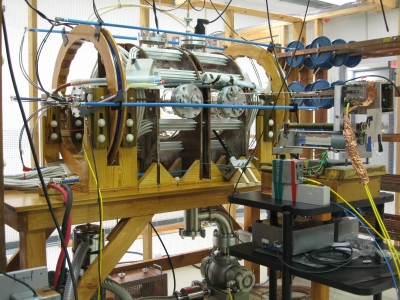
Meanwhile a billion dollar Chinese energy company, ENN, has started a project to build a FRC based on the Princeton Rotamak machine. The ground is fertile with ideas that have not been supported by the US government. Some are not American. For example, the gas dynamic trap in Russia recently broke through many of the problems that plagued mirror machines. Despite calls from US experts – the US has no mirror machine operating anywhere in the country. China has also moved into superconducting tokamaks. Today, China's EAST is a topnotch superconducting tokamak. The US has no such machine.
There is raw frustration over this in the fusion community. That anger cuts across all approaches. Everyone in this field agrees: policy-makers simply do not get how important this work is.
_
Labels:
difficult issues,
science,
science fiction,
secular trends
Subscribe to:
Comments (Atom)




























